Bohomazov Oleksandr
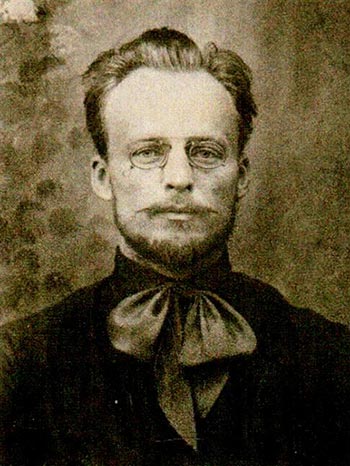
Oleksandr Bohomazov (1880-1930) is a Ukrainian artist, teacher and a cubofuturism theoretician. He named a regular square a perfect shape in art a year before the conceptual Black Square by Kazimir Malevich emerged. He gave artistic work an independent place in the “artist – painting – viewer” triangle. He worked out a formula describing the interaction of shape and colour with an audience’s emotional perception. All these innovations in art theory were produced by Bohomazov, a Kyiv artist, in a purely intuitive way, using his own analysis and understanding, absent close contact with representatives of prominent art directions which were actively developing in European modernist art of the early 20th century.
Bohomazov did not study in Europe or enjoy active life in the West like his friends, Ukrainian artists Alexandra Exter and David Burliuk. However, friendship with them fed his artistic search: for example, through Exter who travelled between Kyiv, Paris and Milan Bohomazov discovered Italian futurism. His theoretical works are not as well-known as those by his colleague Kazimir Malevich. The world started learning about Bohomazov only in the late 1960s – almost 30 years after the artist's death. But for Bohomazov’s widow, Vanda Monastyrska, his works and memory could have been lost in the black hole of Soviet cultural policy.
Throughout his life he was stubbornly making his way in the avant-garde protest movement: from calm impressionism and symbolism through futurism to explosive cubofuturism. He is not a “Ukrainian Picasso” as the journalists often call him; he is a creator of a global avant-garde with talent equivalent to that exhibited in French cubism.
Myasnitskaya Street, 24, Moscow, Russia
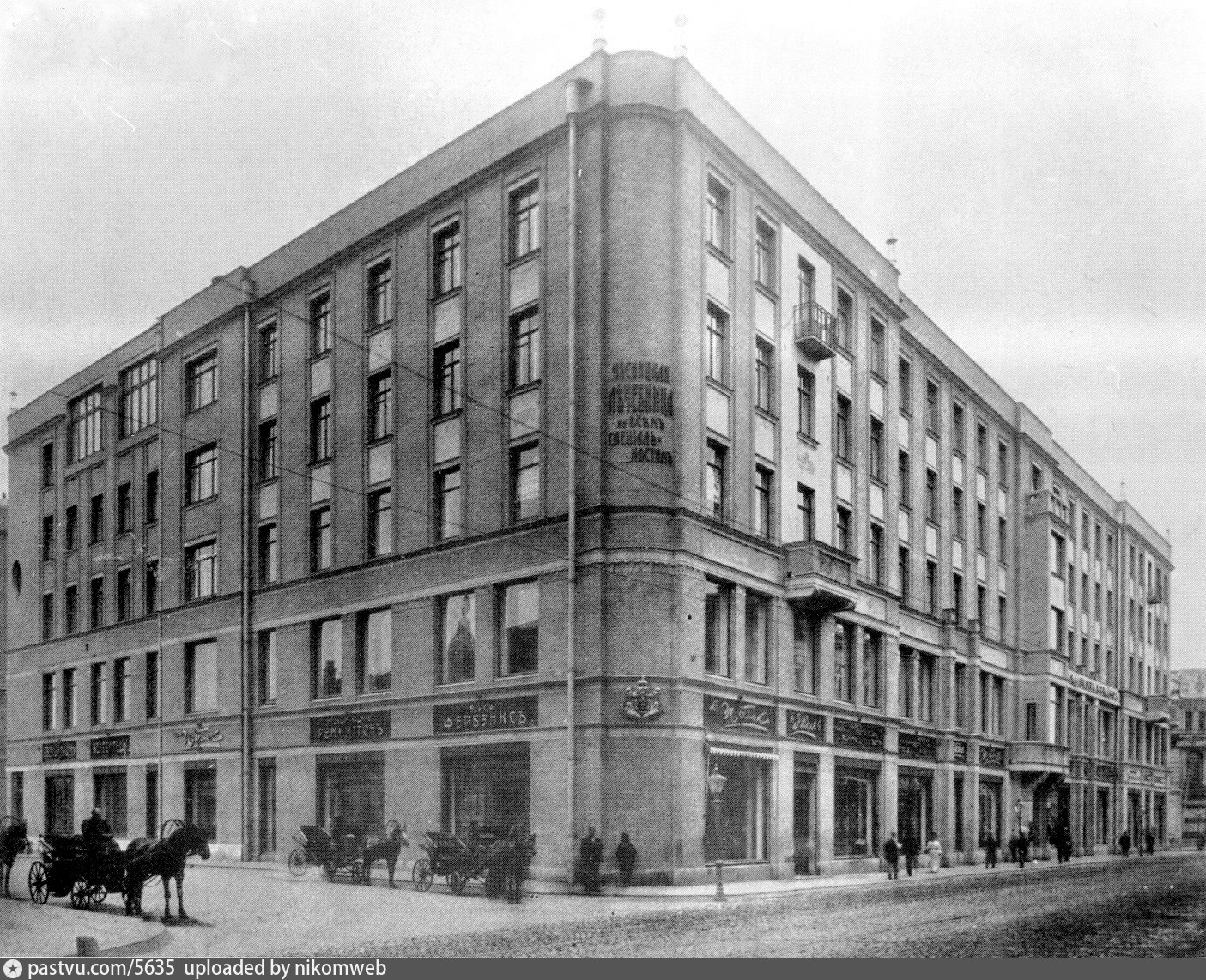
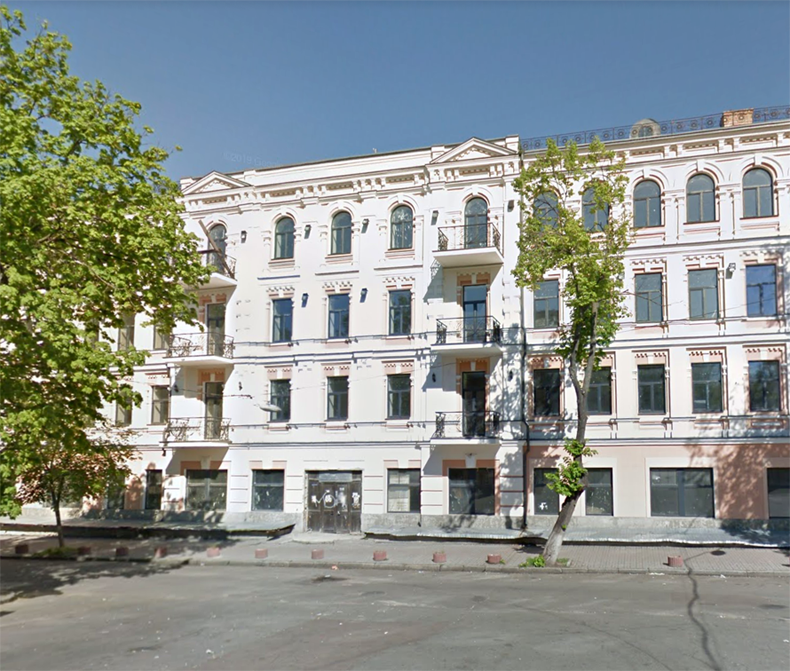
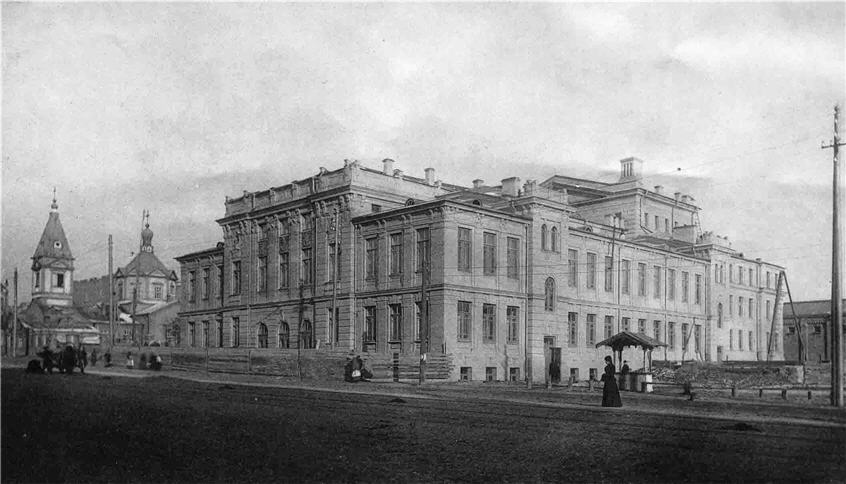
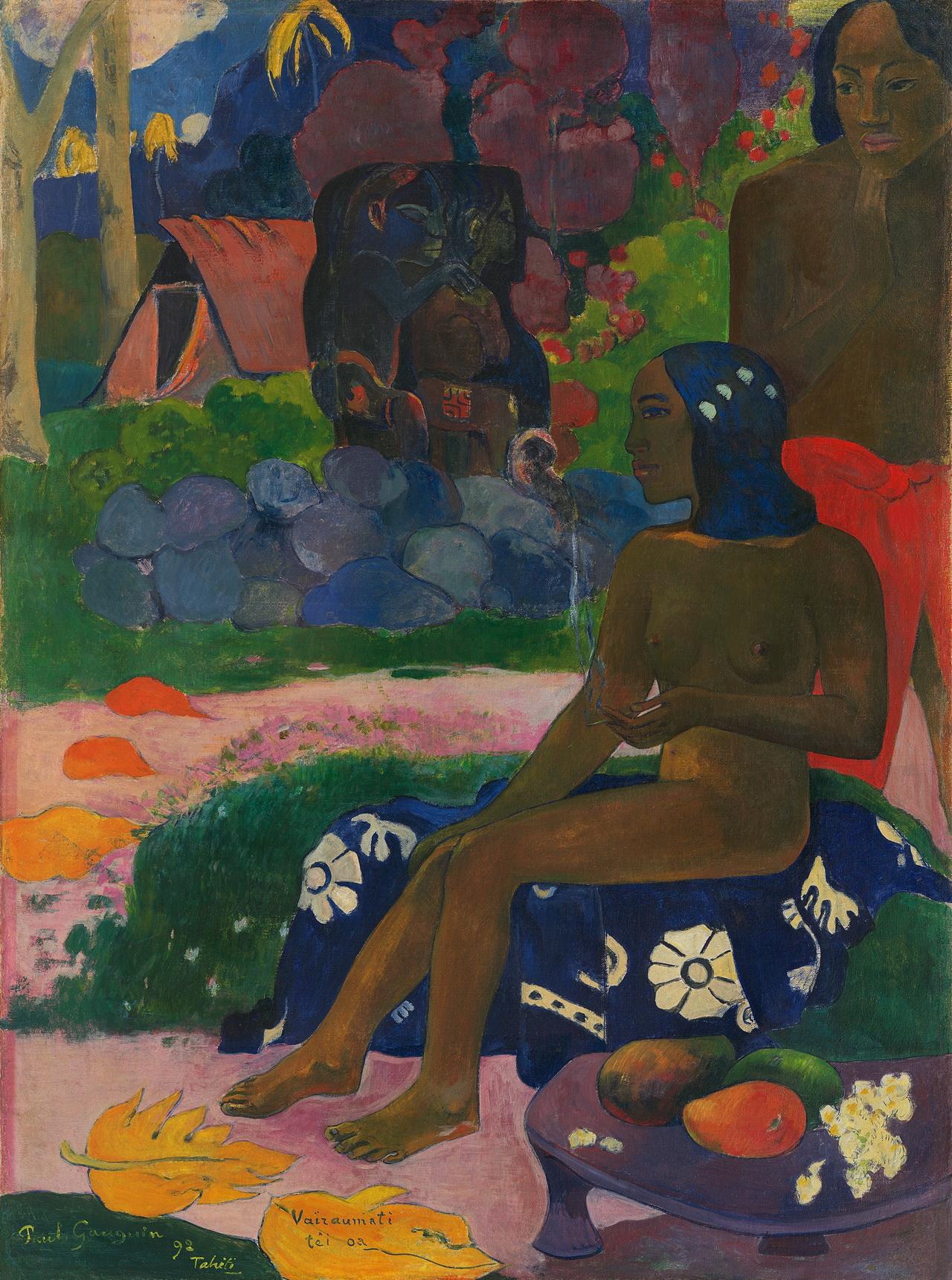
In 1907, at this address, Oleksandr Bohomazov studied in the drawing and painting studio of Fyodor Rerberg, a well-known teacher. At the time of his studies in Moscow he had already received a basic art education from the Kyiv Art College (1902-1905). He had been expelled from the Kyiv college along with Alexander Archipenko for their participation in a strike associated with social unrest in the Russian Empire. In Kyiv, his teachers were Alexander Murashko, Ivan Seleznyov, and Mykola Pymonenko. In Kyiv, Bohomazov hadparticipated in a student exhibition organized by Sergiy Svyatoslavsky, a landscape artist, in the grandiose Troitsky People’s House (now the Operetta Theatre).
In Moscow, Bohomazov studied in two private studios organised by Konstantin Yuon and Fyodor Rerberg. The latter had Kazimir Malevich as a student a year before Bohomazov’s arrival; Bohomazov would meet Malevich in person 20 years later when they taught at the Kyiv Art Institute. In those times, progressive youth dabbling in the arts took to impressionism and post-impressionism. Other than his studies, an obligatory part of a young artist’s schedule was familiarizing himself with “great paintings by Gauguin” from Schukin’s collection and from visiting the Tretyakov Gallery.
After his return from Moscow, Bohomazov finished his studies at the Kyiv Art College (1908-1910). A note in his diary from 1910-1911 sums up his starting point in the arts: “I am an artist. This is both my strength and my weakness. I cannot give it up because I already know that at the very first opportunity this passion will return with new power. This is not a whim; it is a need, the meaning of my life.”
Khreschatyk Street, 52, Kyiv, Ukraine
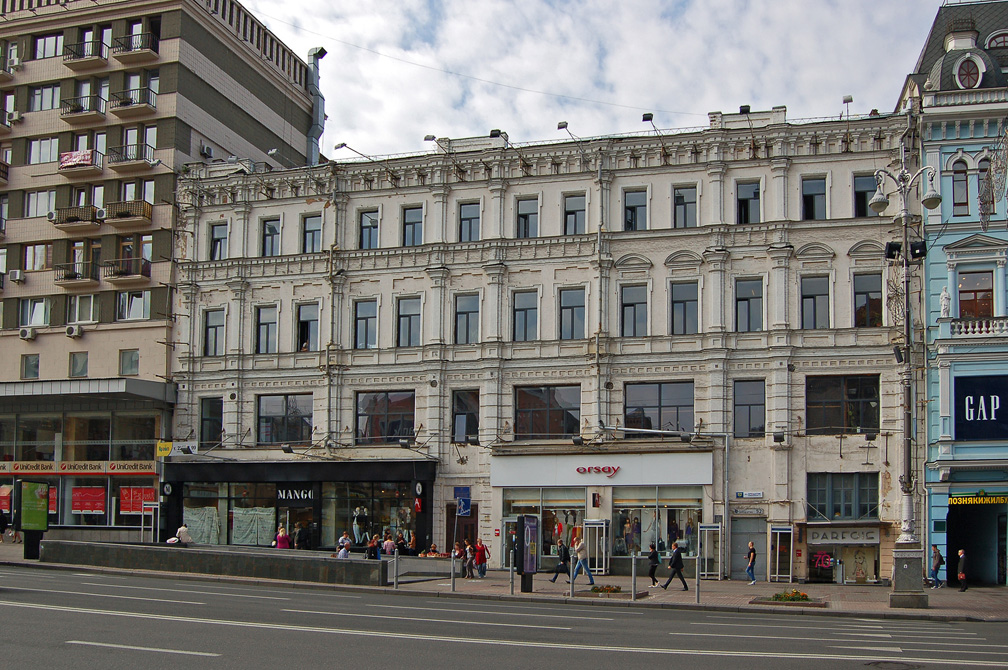
On 2 November 1908, on Kyiv’s central street, the Lanka exhibition opened; this was a conditional starting point of the Ukrainian avant-garde – the first of a series of exhibitions showcasing young avant-garde artists and making evident the connection between old and new art. Young artists – David and Vladimir Burliuk and Alexandra Exter – invited students to exhibit their works, Oleksandr Bohomazov among them. This was a well-organized event: with announcements and advertising in the leading press, newspaper discussions, and “A Night of Contemporary Poetry”, a multidisciplinary event at which authors read their poems to music accompaniment. The exhibition did not attract many visitors, but its critique accompanied by caricatures and satirical articles was devastating. Oleksandr Bohomazov, who resumed his studies at Kyiv Art College, showcased four works classified as sketches in the catalogue. “At the Lanka exhibition you will not see too many artful paintings. Not because the exhibition is ‘new’ and the painting style in many works is unusual for our eye, but because, with few exceptions, this is an exhibition of talentless artists,” wrote the Kyivska Dumka newspaper.
The article also mentioned Bohomazov, calling him a “penciller” and claiming he had no connection with famous art groups. So, here’s a fun fact in the artist’s biography: three years later, Kyivska Dumka would send Bohomazov on a business trip to Finland.
Scandic Imatran Valtionhotelli, Torkkelinkatu 2, Imatra, Finland
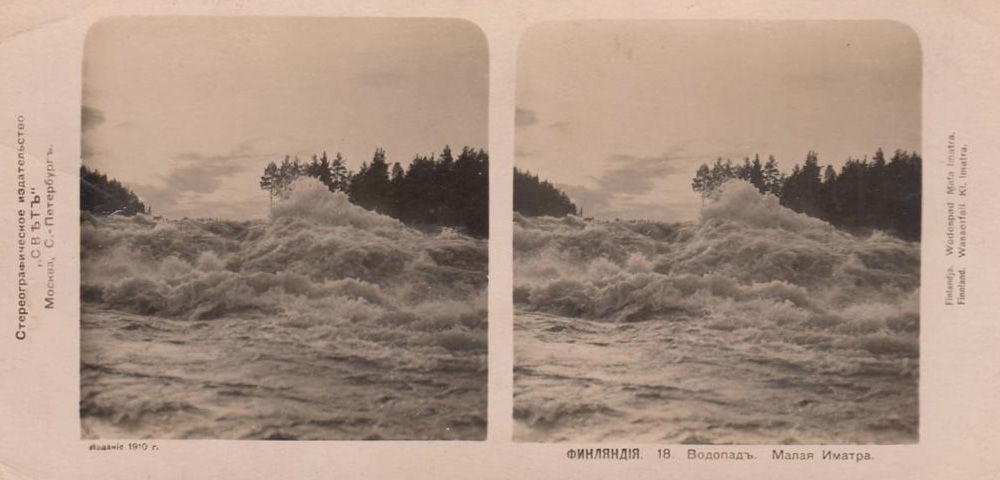
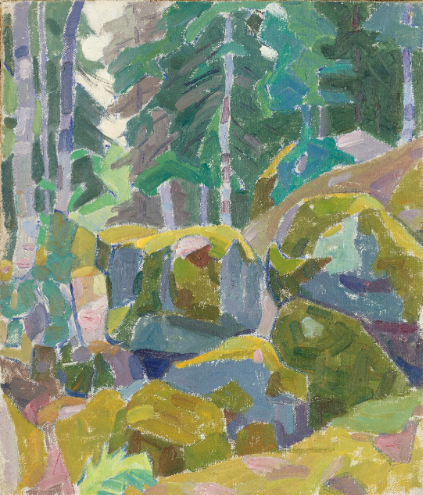
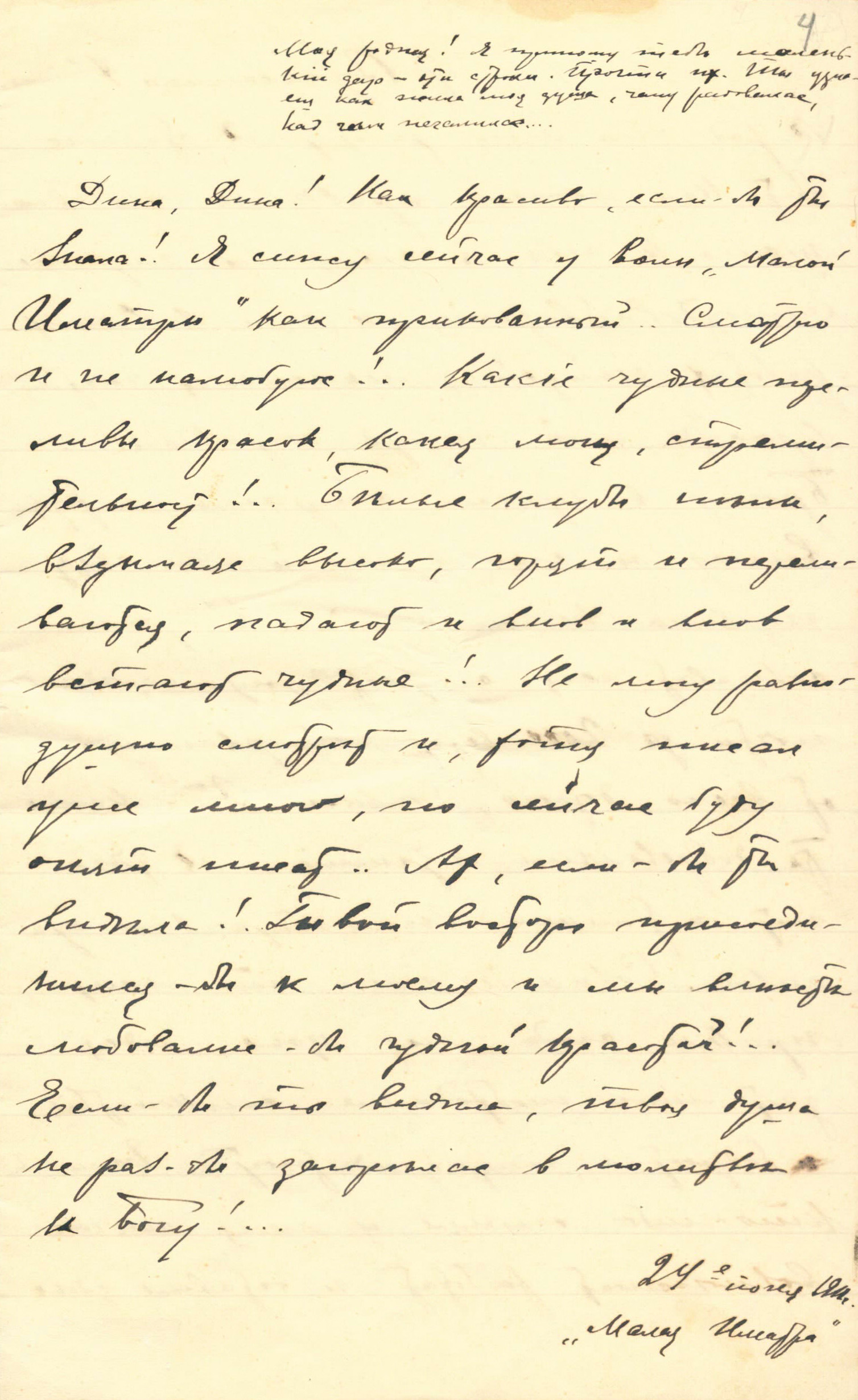
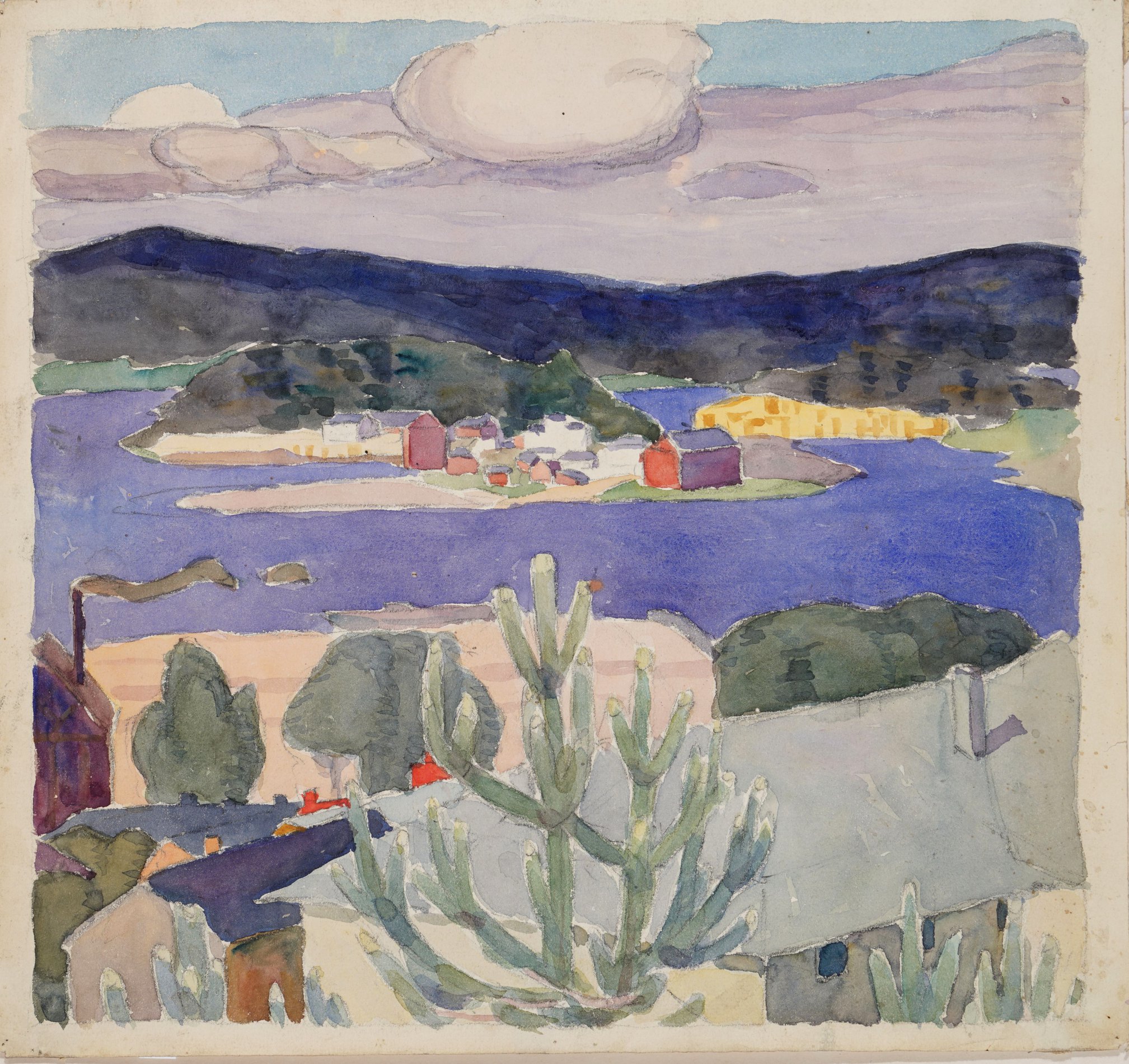
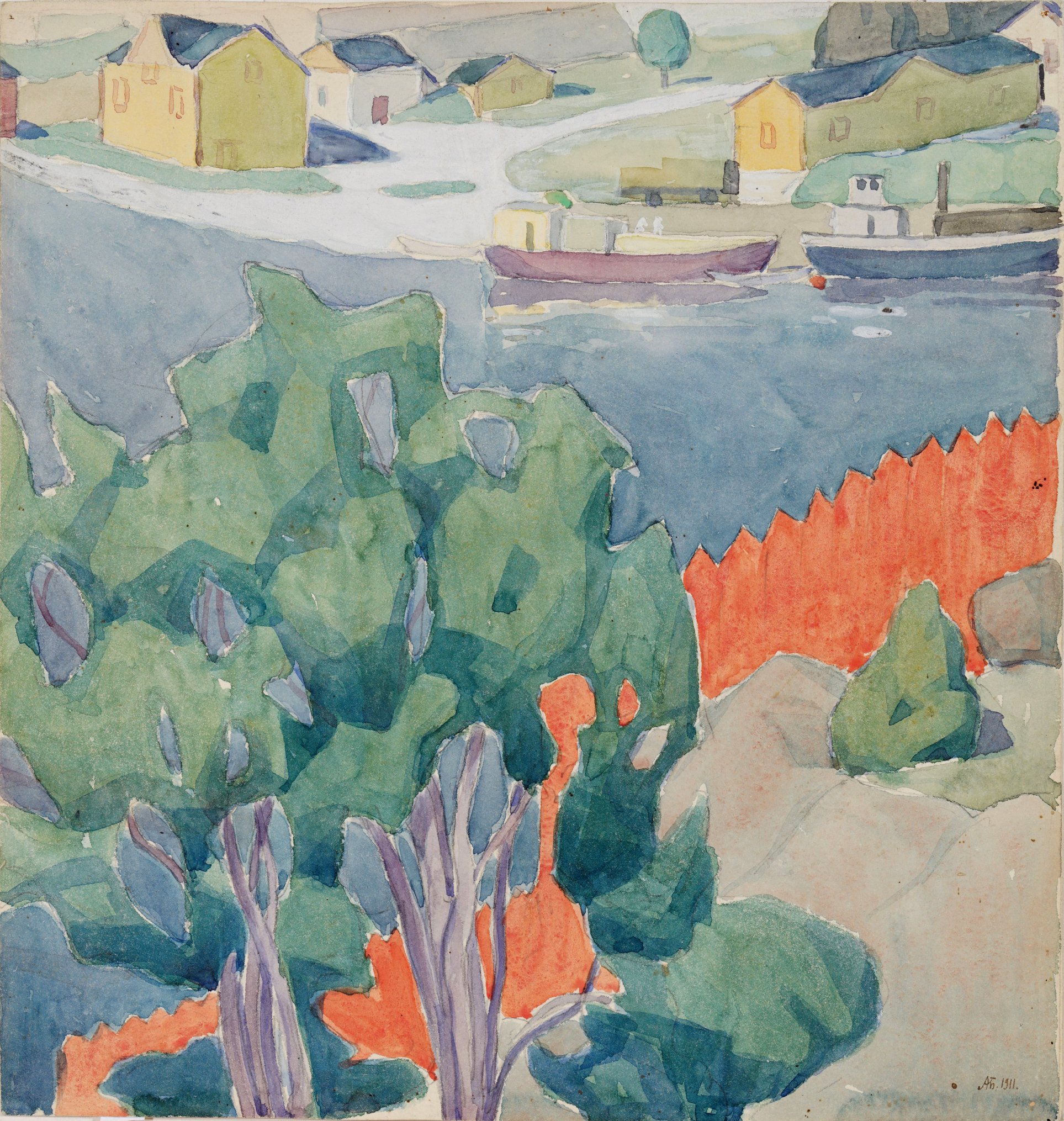
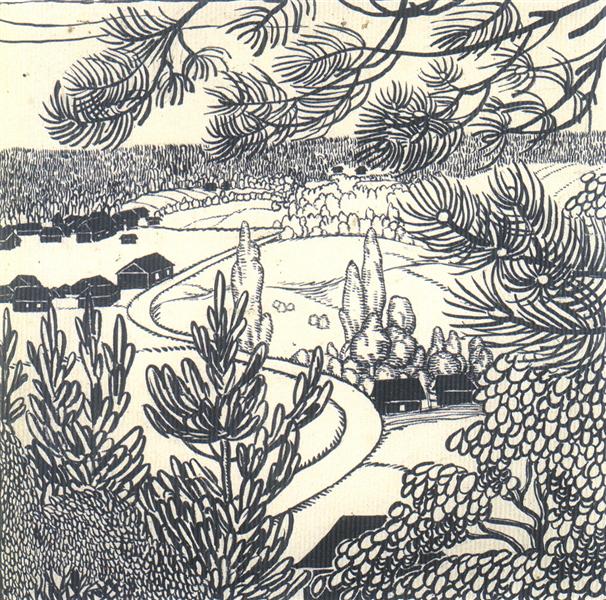
In the summer of 1911, Oleksandr Bohomazov travelled between well-known resorts in the Principality of Finland during a business trip on behalf of the Kyivska Dumka newspaper. He discovered Nordic modernism with its crude granite slabs, local flora and fauna, and national folklore characters. This is how The Tower painting appears, portraying the exterior of Valtionhotelli, a famous hotel in Imatra.
In general, the artist covered a tourist route popular among wealthy Russians of the time: Imatra with its rapids and waterfalls, rolling and winding ridges in Punkaharju (currently Lappeenranta), and the fortress city of Nyslott (currently Savonlinna). All these locations were within the water system of beautiful Saimaa Lake in eastern Finland. “Dina, Dina! How beautiful it is, I wish you could see it! I am now sitting next to the waves of Little Imatra and cannot leave… I am admiring it and cannot get enough of it: these wonderful pearly colours, power, and speed! White tufts of foam rising high above burn and sparkle, fall and come back again as if charmed!”, this is what Bohomazov wrote excitedly to his bride Vanda Monastyrska on 24 June 1911.
The Finnish landscape reflects Bohomazov’s passion about modernism based on symbolic and romanticized images, the decorative quality of colour, and smooth lines.
Khreschatyk Street, 43, Kyiv, Ukraine
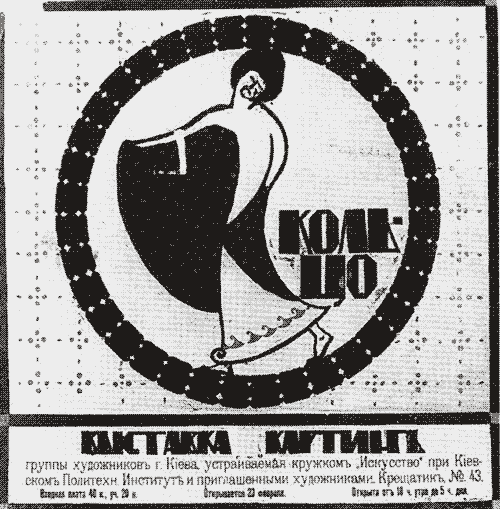
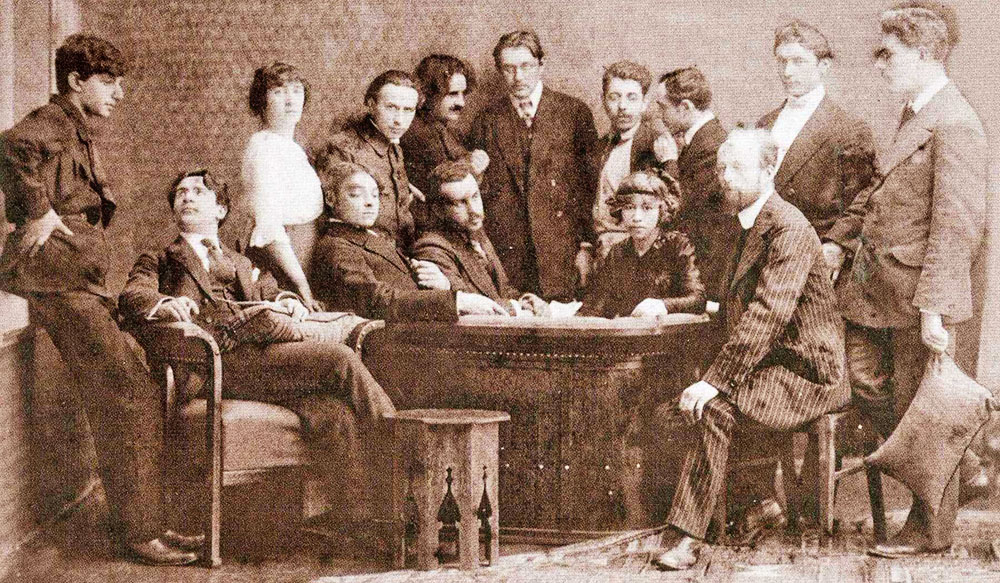
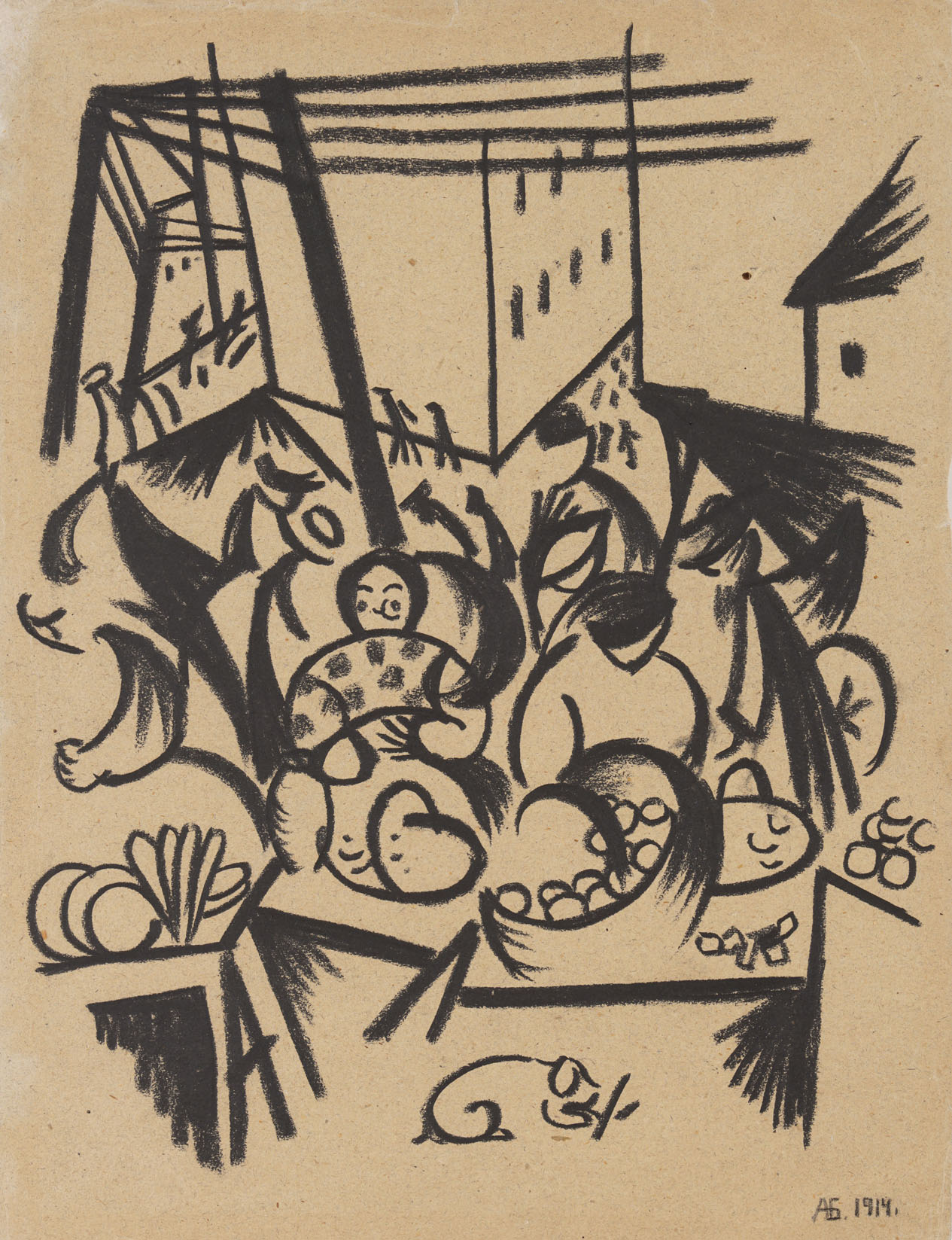
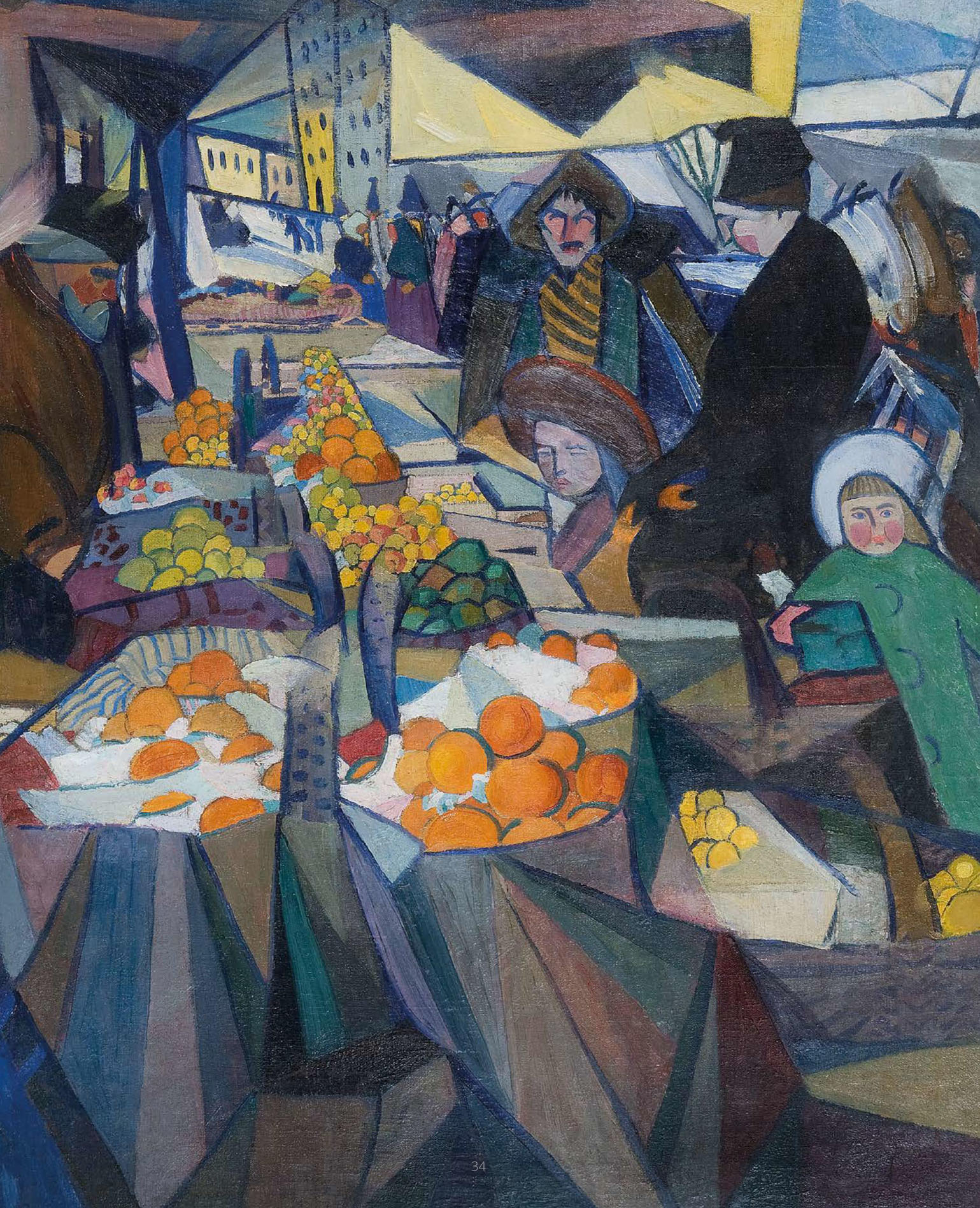
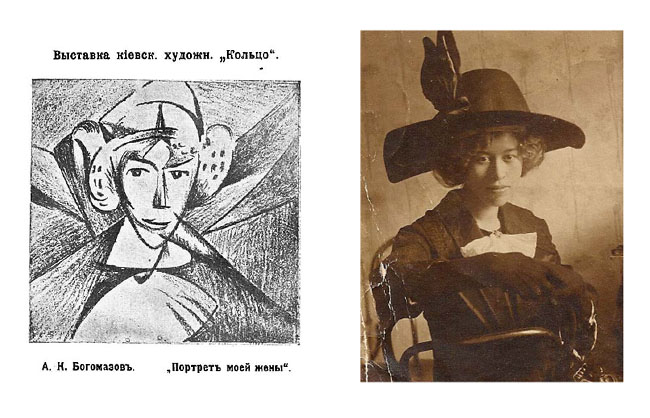
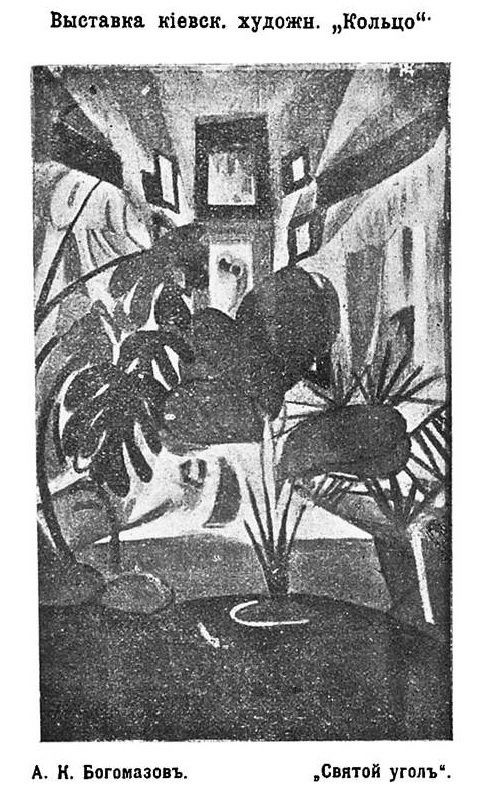
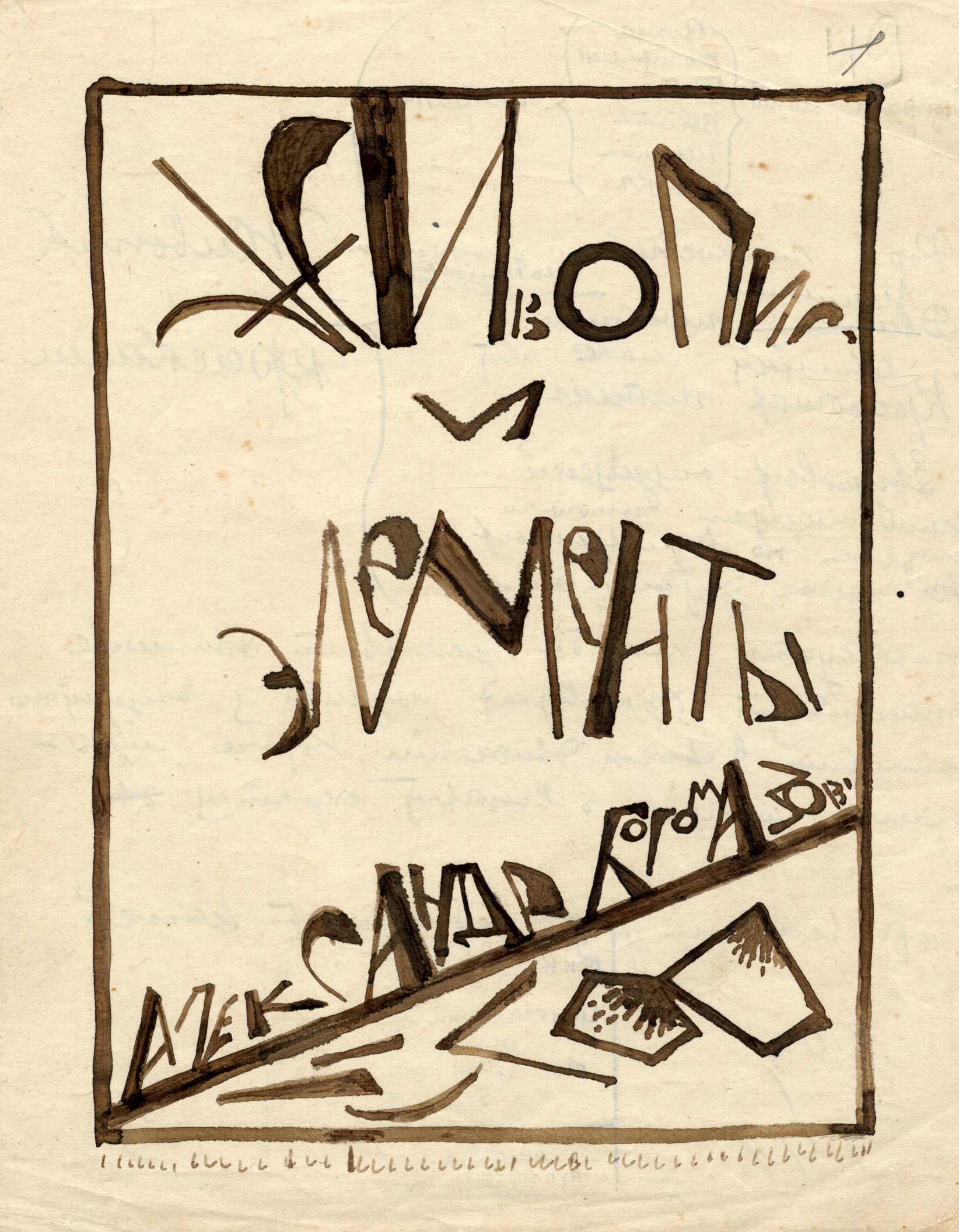
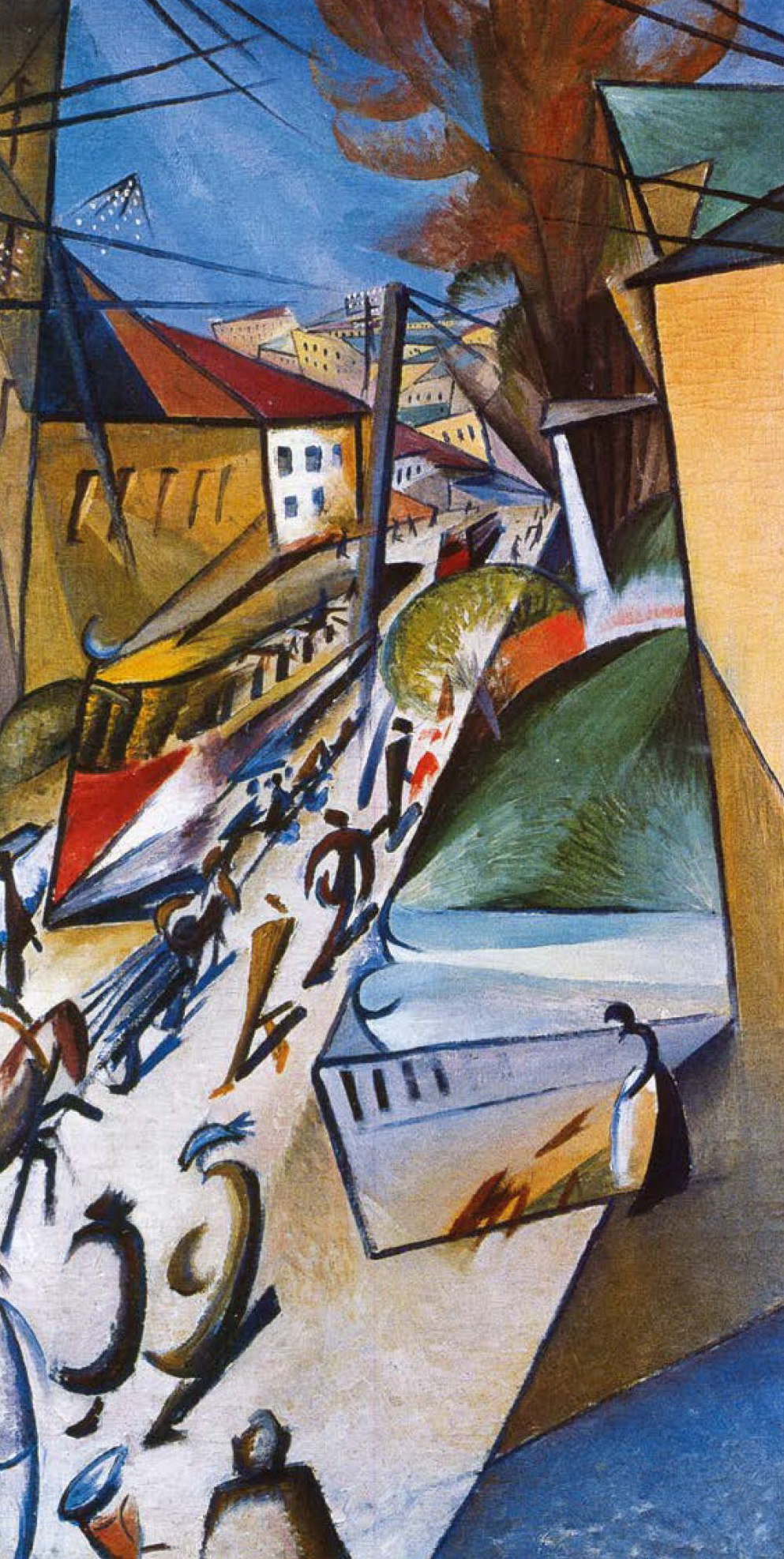
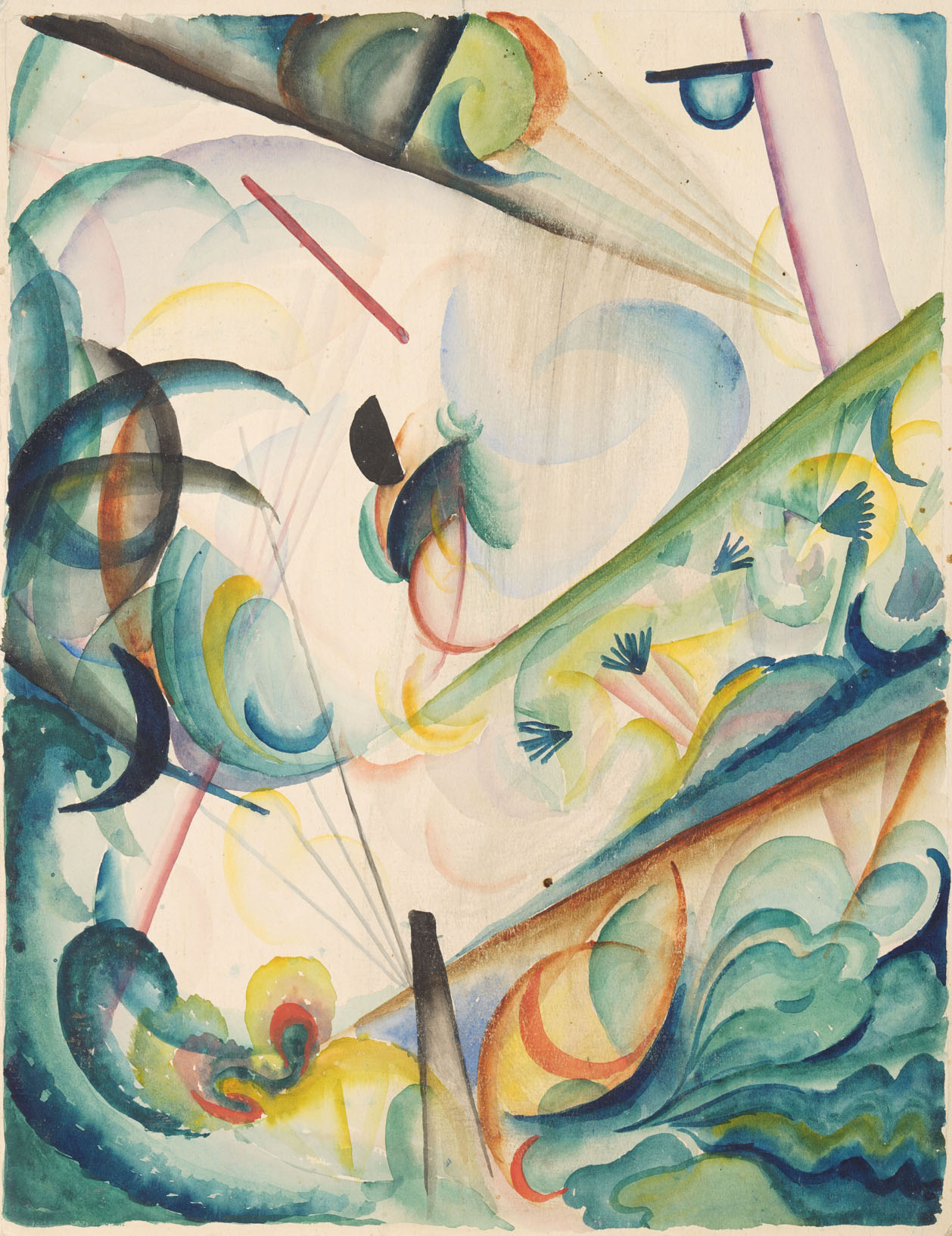
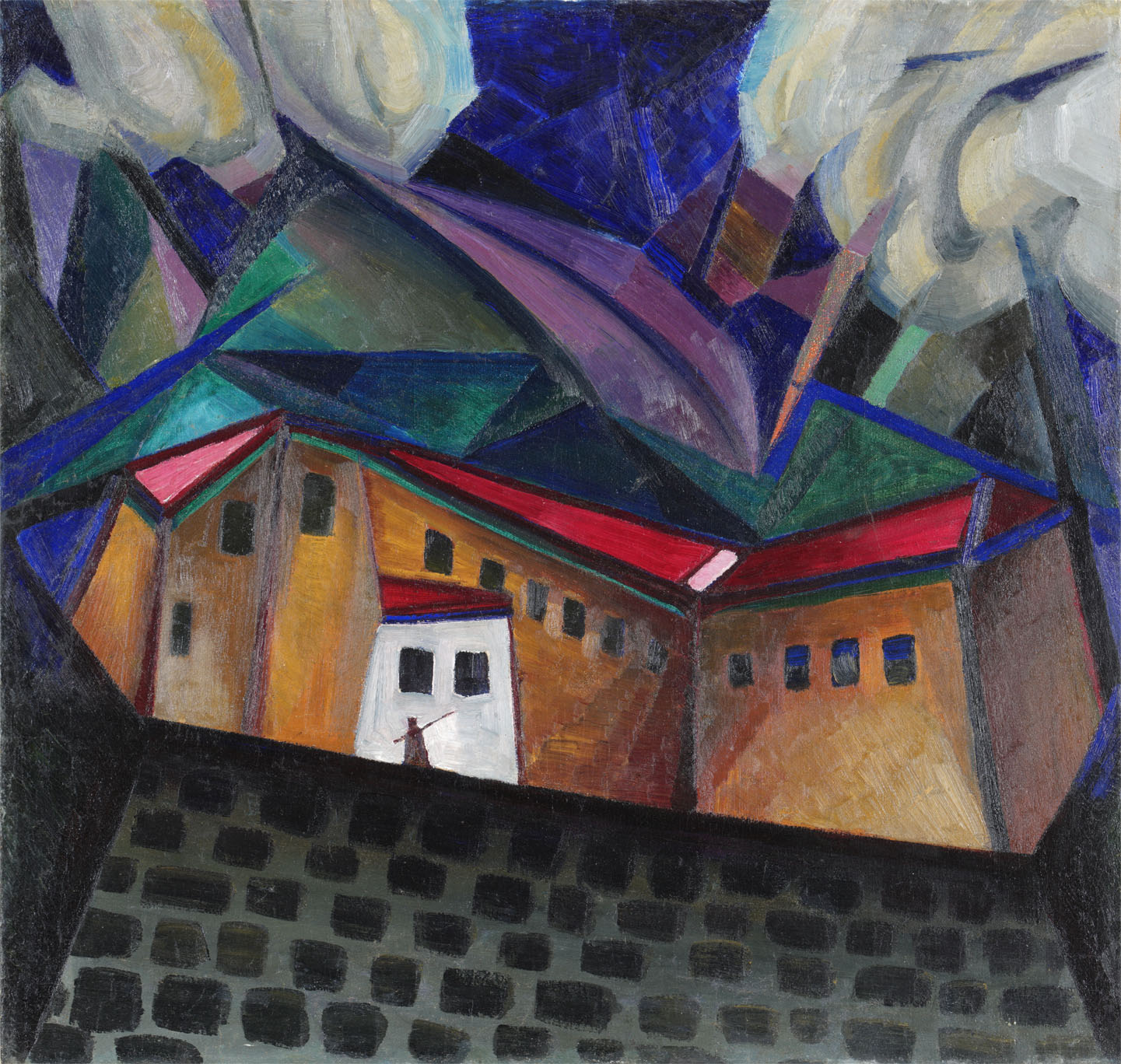
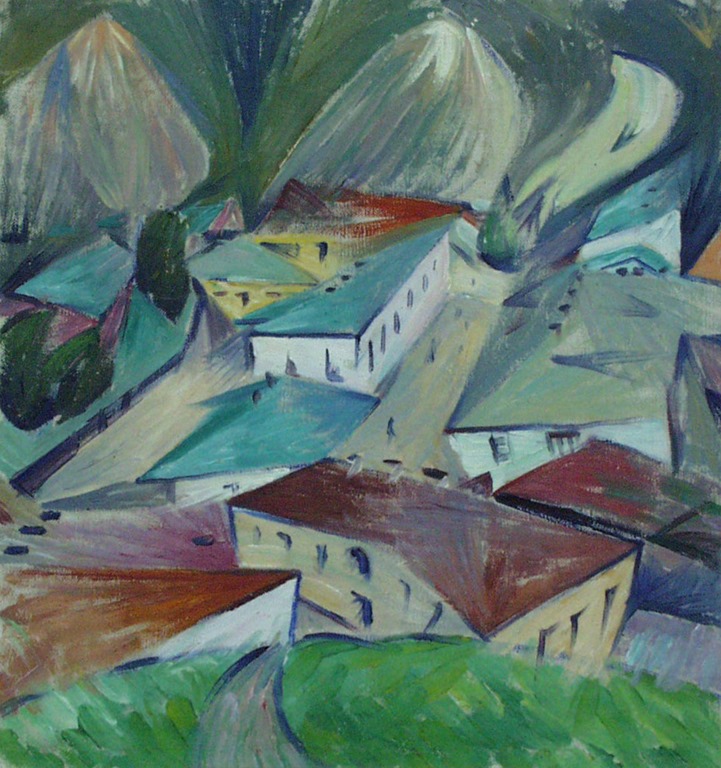
On 23 February 1914 what would become a famous exhibition--The Ring--opened in the centre of Kyiv where Bohomazov participated as both artist and avant-garde art scholar. The Ring group included Alexandra Exter, Oleksandr Bohomazov, Mykhaylo Denysov, Katerina Vasilyeva, Vanda Monastyrska-Bohomazova, and Christopher Knorr (Norway). At the exhibition, Bohomazov showcased 88 works, among them his brilliant cubofuturist paintings The Market, Wife’s Portrait, and Holy Nook. He also designed the catalog and wrote an introductory article and programme text--The Gist of Four Elements--which he would soon develop into a longform research article--Painting and Elements. “We applaud the artist’s inspiration to break the shell into which the academic tradition has put his creative personality,” said The Ring organizational committee, presenting publicly a description of four elements in which the work develops: line, shape, painting plane, and colour.
This time Bohomazov’s work was fully supported by the critics. Mykola Kulbin, a Russian art scholar and artist, named 34-year-old Bohomazov “a breakthrough”, which is “the main advantage of the exhibition”. And Kyiv art theoretician (later theatre director) Mykola Foregger even called his works “masterpieces”: “Bohomazov is showcased in the richest and the most prominent way as opposed to other artists. He is the most valuable among the Ring artists… One can see his love for new composition forms and the search for an integral expressive nature of a painting. In that vein, he does not go to extremes… His Holy Nook and The Market are masterpieces worthy of any contemporary art collection.”
That year, 1914, the artist created his signature cubofuturist painting Tramway. In 1986, when avant-garde researcher Jean Chauvelin saw the painting for the first time, he said, “I have travelled all over the Soviet Union observing leftist art, but this is the best thing I’ve ever seen!”
It was Kyiv that inspired the restless soul of Bohomazov. On the one hand, it is replete with quiet nooks. On the other, it is a place of rapid change and innovation. A good example is Kyiv’s electric tram, the first in the Russian Empire and one of the first in Eastern Europe. Bohomazov was interested in conveying this rhythm, tempo and dynamic on canvas. The rhythms of Kyiv buildings, windows, lights, passers-by and workers still vibrate on Bohomazov’s paintings produced in the late 1910s: Khreschatyk, The Locomotive, Prison, and Potters.
53 Movses Khorenatsi Street, Goris, Armenia
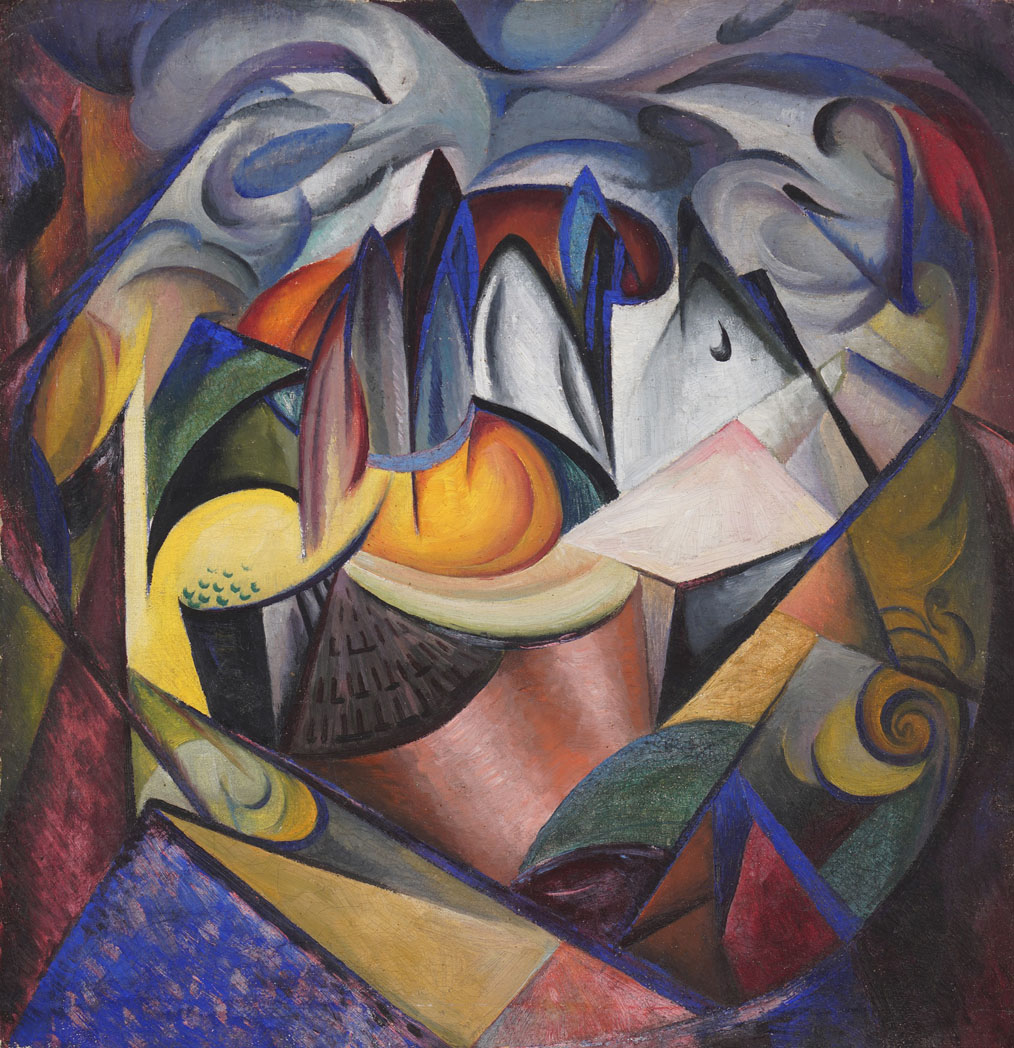
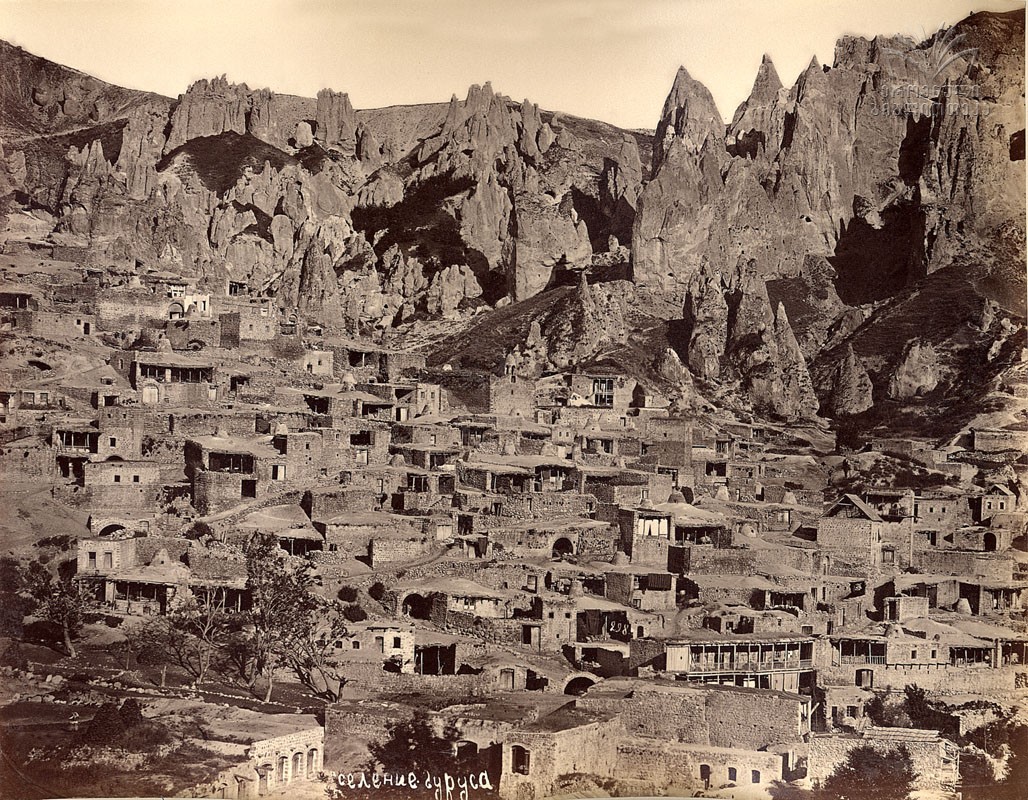

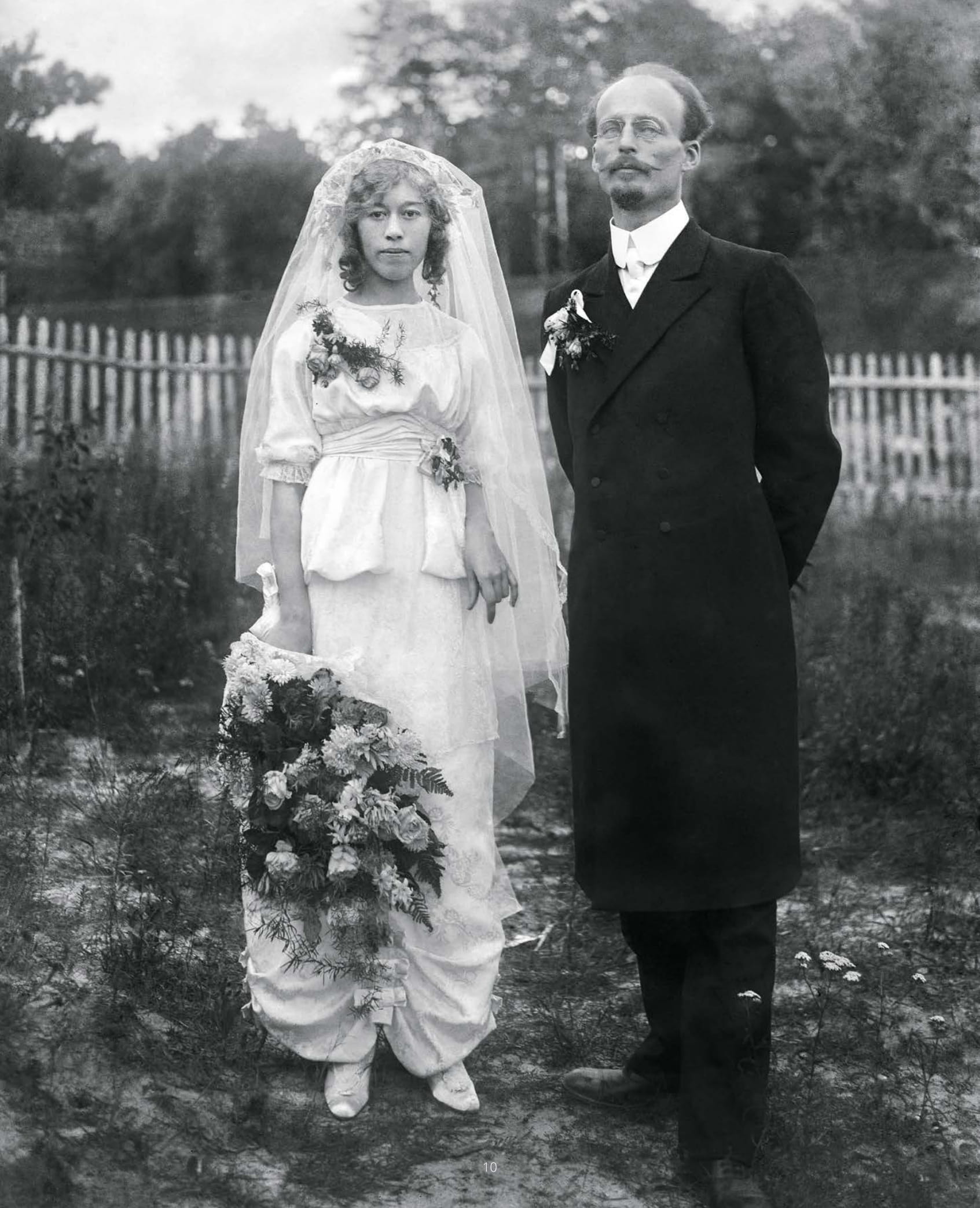
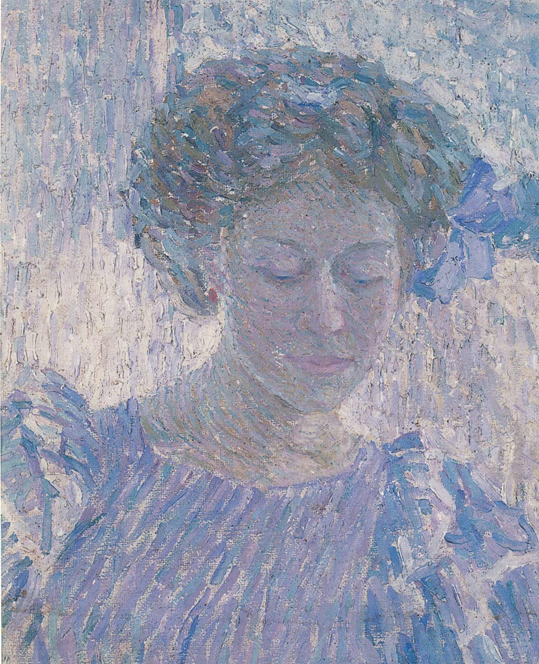
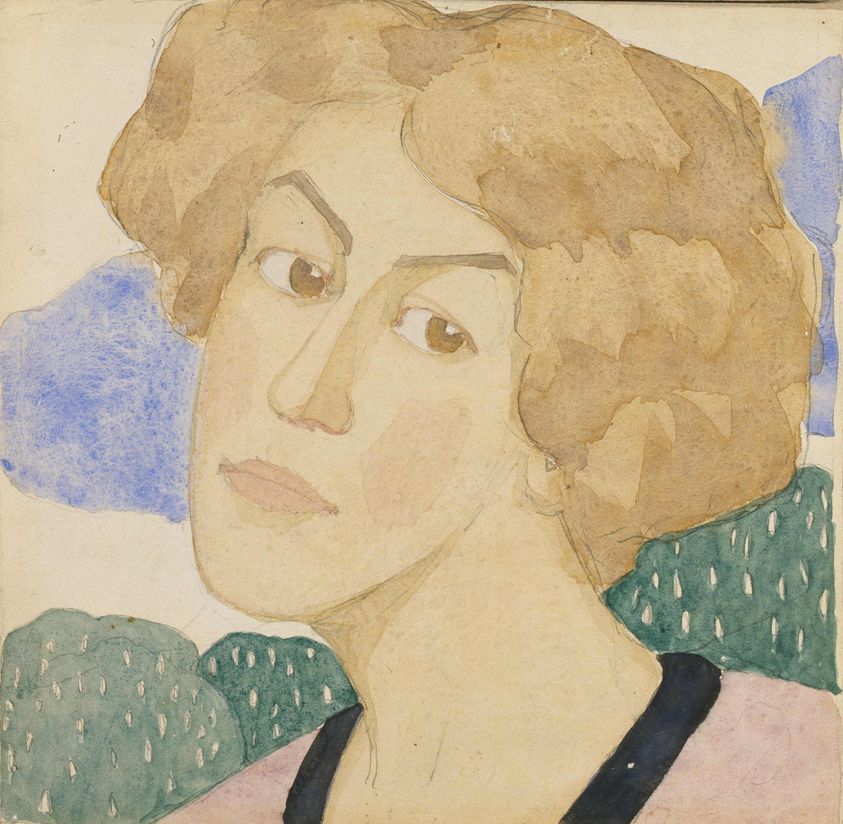
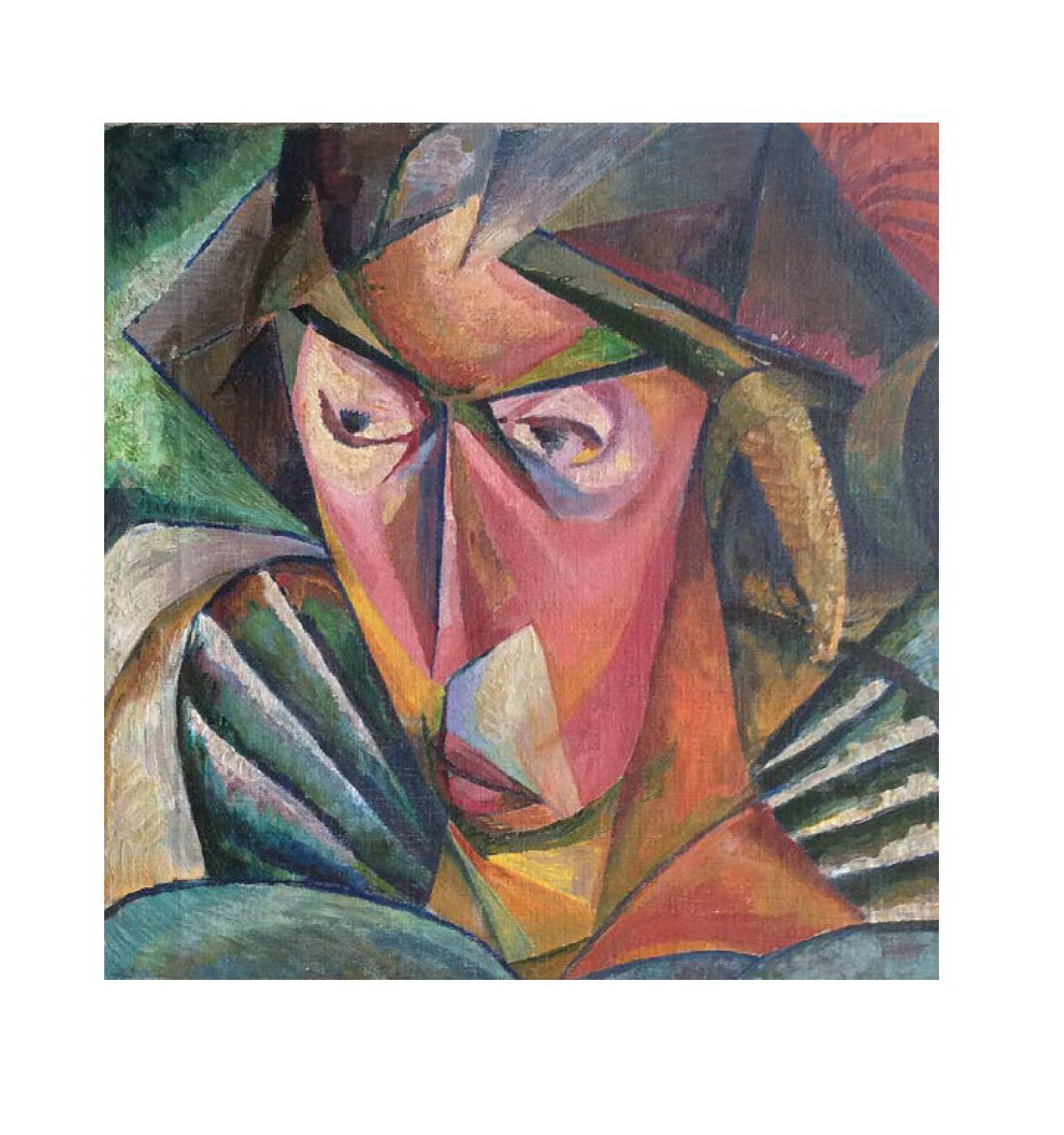
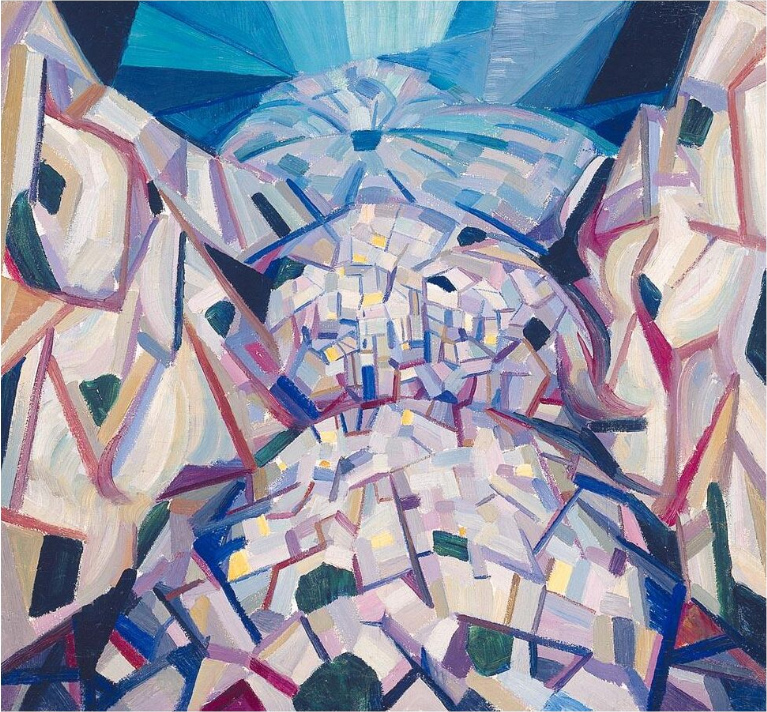
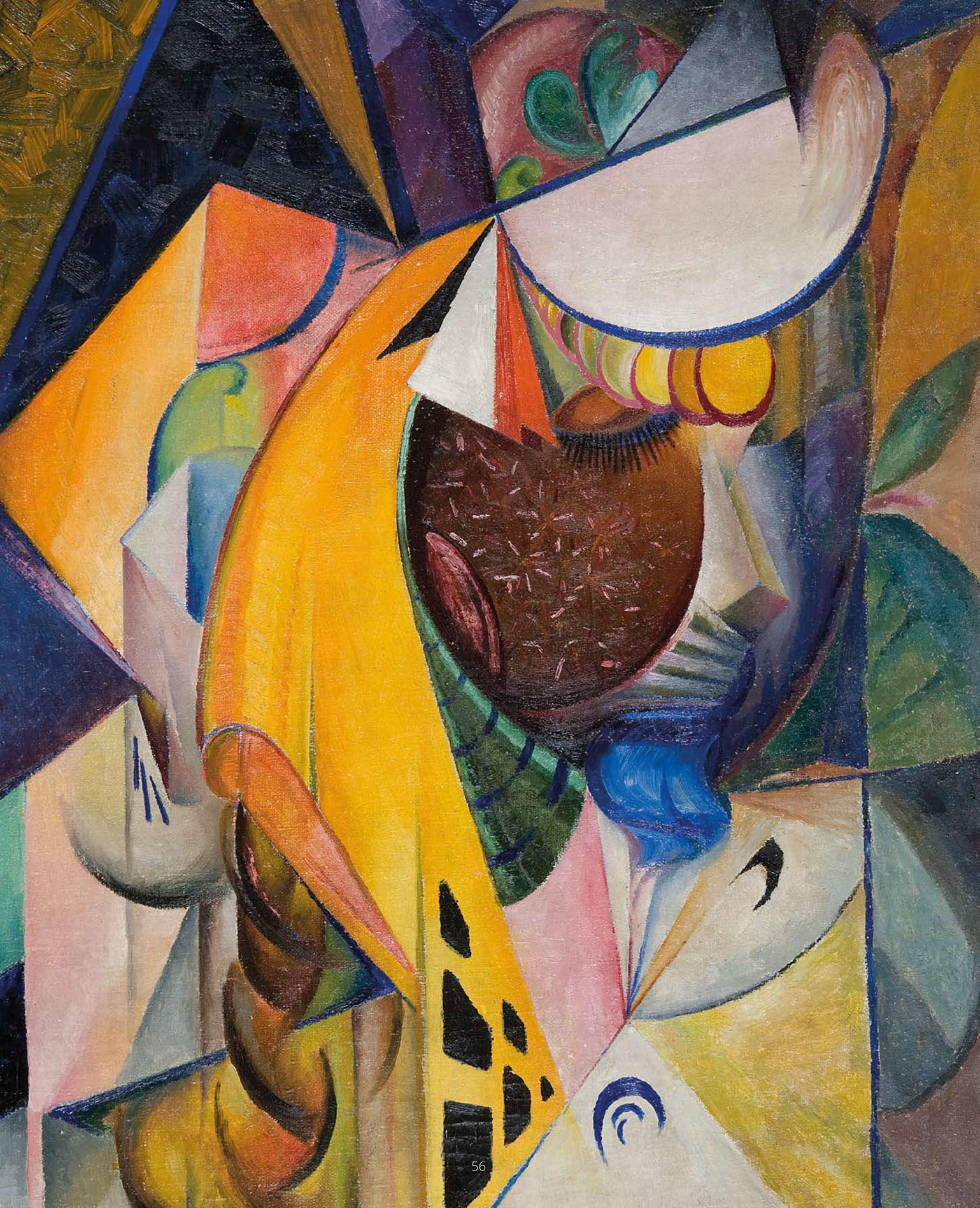
In 1915-1916, Bohomazov was living in the Caucasus where he produced a series of his best cubofuturist works. He worked as a drawing and painting teacher in the village of Geryusi (now the town of Goris). His wife Vanda, also an artist, his muse and faithful life partner as well as careful overseer of his works after his death, also spent time with him in Geryusi. Actually, it was his marriage to Vanda Monastyrska (1888-1982) that added some energy to the life of the melancholic artist. The dynamics of his professional development can be tracked via the frequent and numerous portraits of Vanda that Bohomazov painted. First, pointillism painted after they first met, followed by later expressionist portraits, and finally cubofuturist drawings of an extremely fruitful period following their marriage. When the artist died in 1930, Vanda carefully kept his archive. There is a story that during World War II she personally transported Bohomazov’s archive on a cart from the centre of Kyiv to the Svyatoshyn neighbourhood—a distance of 15 km. Later, she would bring the works back in the same way.
An Abstract Landscape created during the “Caucasian period” was sold at Sotheby’s in 2005 for 736,000 GBP. Another work, Memories about the Caucasus (1916), is called by experts one of the best abstract works in the world. In Armenia, Bohomazov met hard times: his salary was delayed or not paid at all, so he had to save on food and heating. His daily routine included going to sleep between 8 and 9 PM, and getting up at 4 AM to start to painting. In addition, he held a teaching job during this period.
Giardini della Biennale, Calle Giazzo, Venice, Metropolitan City of Venice, Italy
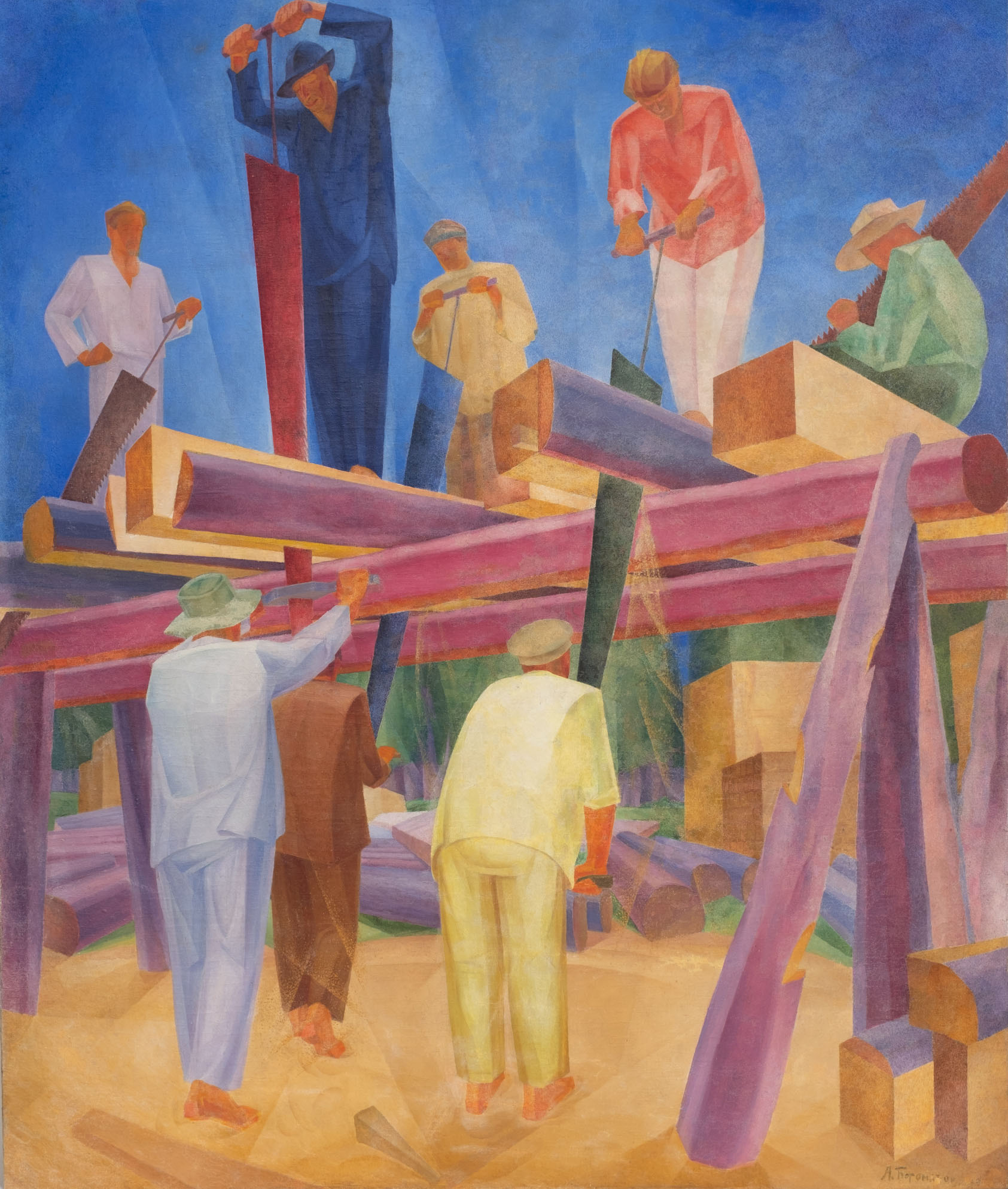
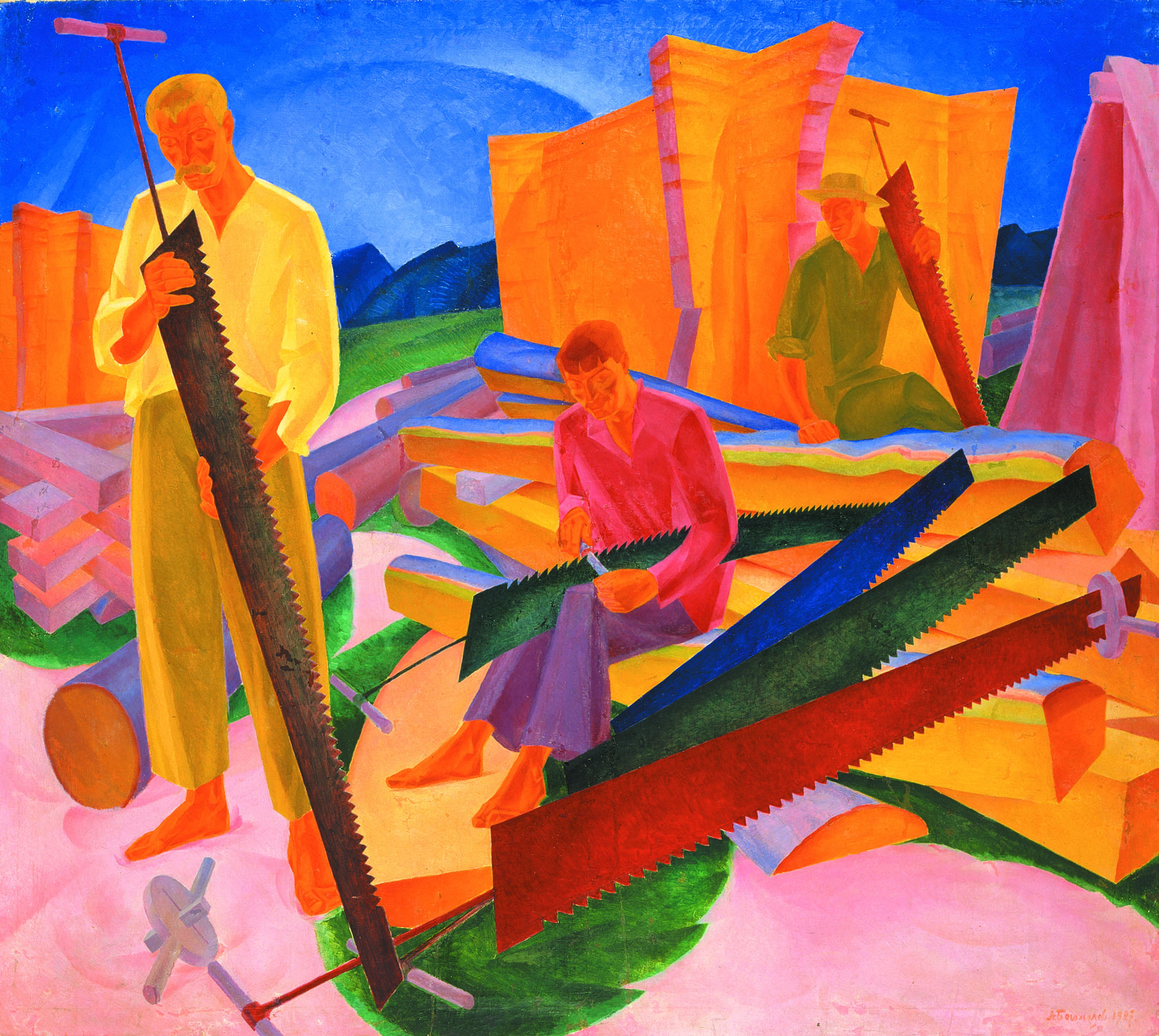
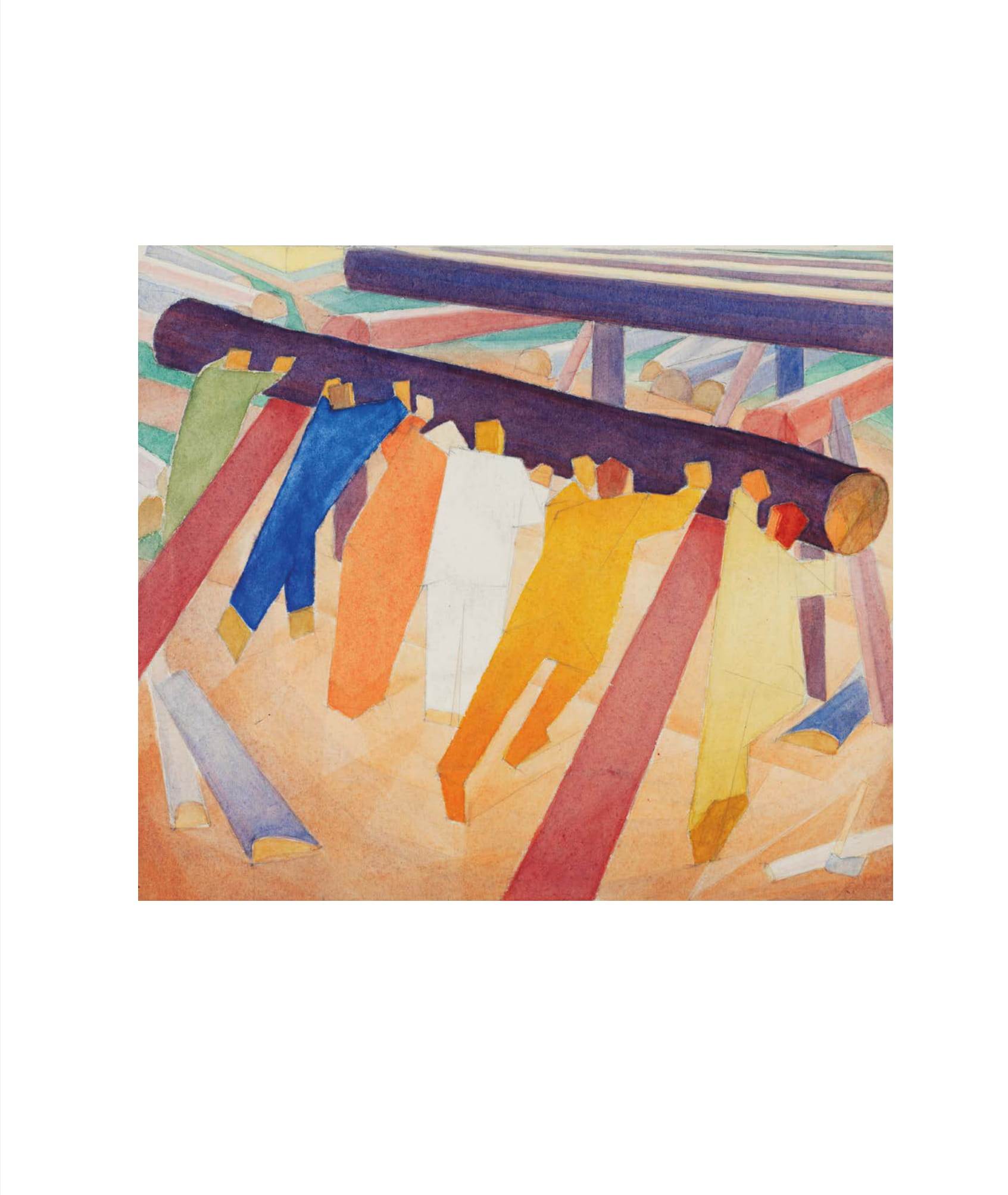
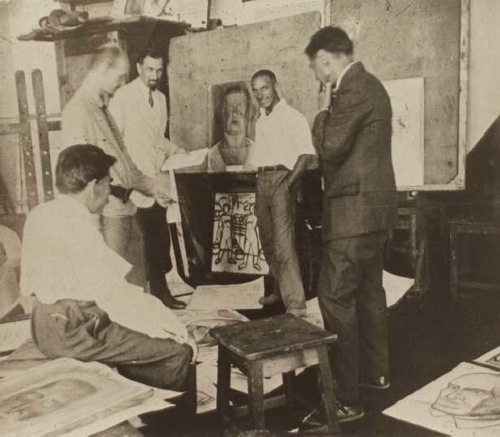
In the summer of 1930, Bohomazov’s painting The Woodcutters was exhibited in the Soviet pavilion of the 17th Venice Biennale. At that time, the USSR’s participation in the biennale had become quite politicized: Russian ideologists viewed exhibitions as a vector of propaganda activities. However, young Soviet art was still relatively free from state censorship. So, together with Bohomazov other Ukrainian avant-garde artists saw their artwork make it to Venice—artists like Anatole Petrytsky, Ivan Padalka, Vasyl Sedlyar, and Sofia Nalepynska-Boychuk. The latter three would be executed seven years later under the trumped up charges of “Ukrainian bourgeois nationalism and leading a national-fascist terrorist organization.”
At the time, Bohomazov had already been working as a professor of easel painting at Kyiv Art Institute for eight years (founded as the Ukrainian Academy of Arts in 1917), and participation in the biennale meant his recognition as an artist and a theoretician. Unfortunately, Bohomazov did not live until the biennale opening which had been delayed for five weeks: he died in Kyiv just before it opened.
He created The Work of Woodcutters in 1927-1930 in Boyarka, a dacha condominium. “The clearing was strewn with fresh sawdust, the logs almost rang in the sun, resinous and glistening. The figures of workers on the scaffolding seemed huge against the background of bright blue sky. The high sound of the saw resonated in the air,” remembered Yaroslava, Bohomazov’s daughter. The Work of Woodcutters triptych includes two paintings: The Woodcutters (1929) and Sharpening Saws (1927); the third one to be titled Rolling Logs remained only an idea, reproduced in many sketches and watercolours.
Bohomazov resumed easel painting after a long pause due brought on by his grave emotional state following the death of his father-in-law, revolutionary perturbations, and tuberculosis. Obviously feeling that the end was near, Bohomazov put all his effort into the development of the triptych defined by its dynamicrhythms and gleaming colours (corresponding to his theoretical concept of the artist engaging with four elements of art). “I have joy from work, sun, warmth, and energy. In my painting, I don’t want to show the necessity, complicated nature and adaptation, but the joy and energy, the call – so that the audience is compelled to work, to feel like a organized part of the whole,” Bohomazov wrote in his notes.
Wolfensberger Building, Bederstrasse 109, 8002 Zürich, Switzerland
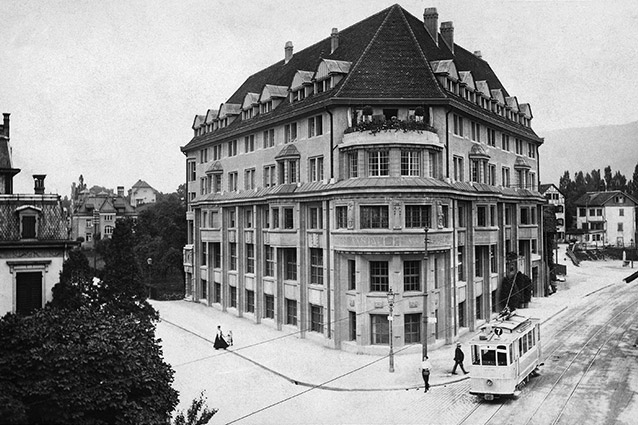
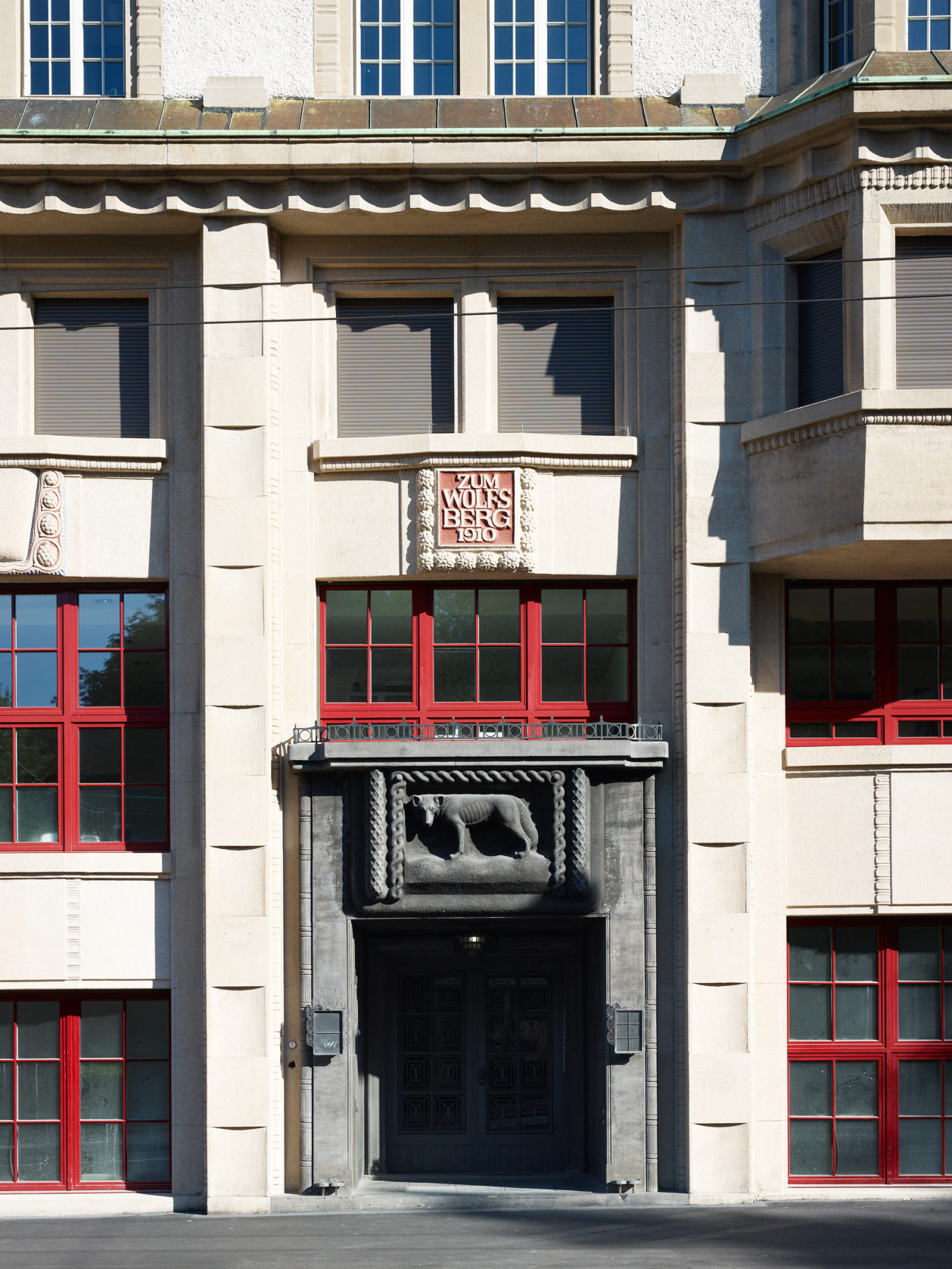
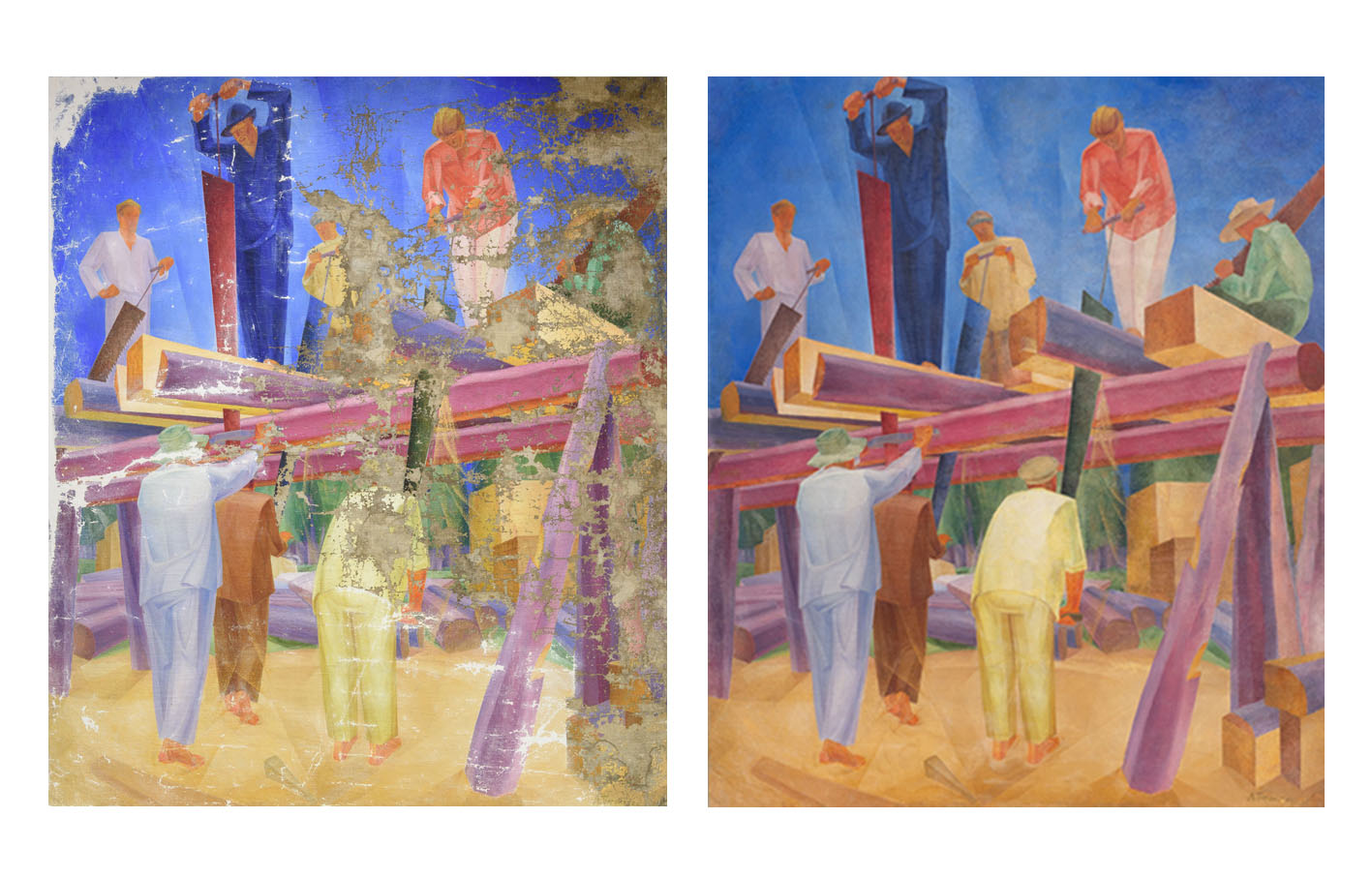
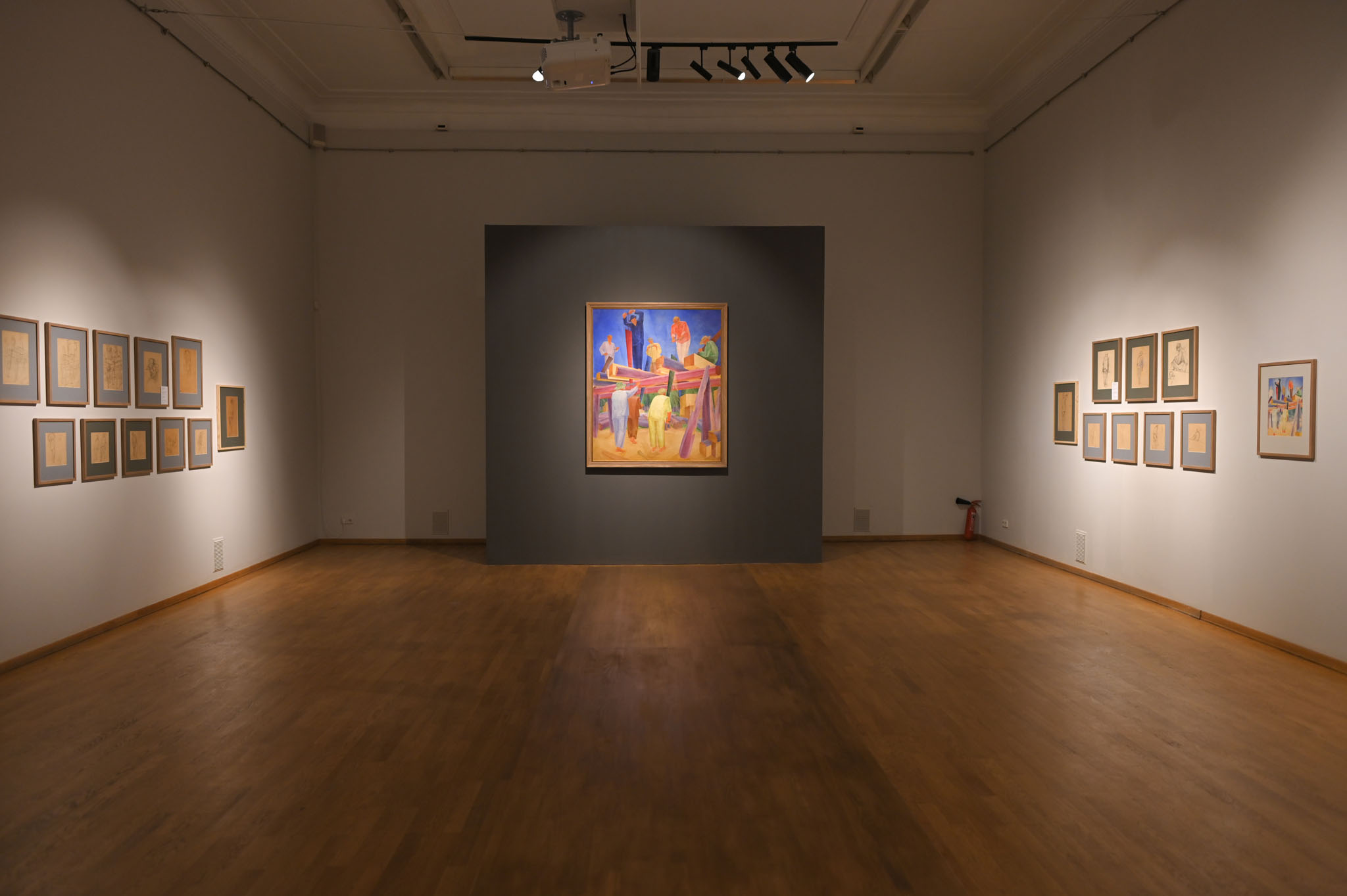
The Woodcutters, a mature masterpiece by Oleksandr Bohomazov, continues to wow audiences all over the world. In 1931, the painting was exhibited in Zurich, and in 1932, in Japan (researchers have yet to uncover in which city the exhibition took place.) The painting was returned to Kyiv damaged. For about 90 years it remained in this state in a closed museum “special fund” where works were sent in late 1930s to be destroyed. At that time, during the fight for pure Soviet art, the avant-garde art was declared to be “formalist”, and work by these artists were banned. Only in 2019 was The Woodcutters exhibited in the National Art Museum of Ukraine--the first time in years at the exhibition “Oleksandr Bohomazov: the creative lab”. Restorers had worked on the painting for three years before releasing it for the exhibit.
For decades it was forbidden to mention the work of world-renowned cubofuturist artists. Only in late 1960s did Bohomazov’s name resurface from its enforced oblivion. Modest exhibitions were held in Kyiv, and European avant-garde researchers, namely Jean-Claude Marcadé, Jean Chauvelin and Andrei Nakov – turned their attention to Bohomazov. His works became fashionable additions to collections ranging far beyond the Soviet Union. Bohomazov’s works are currently exhibited in the National Art Museum of Ukraine, Guggenheim and MOMA in New York, Ludwig Museums (Germany) as well as in numerous private avant-garde collections.
